
Architect and designer, after training at G&R Associati he opened his own studio in Milan in 1982 with Mario Piazza and Guglielmo Ghizzardi. He then founded A+G with Ghizzardi (1994-2019). A consultant for publishing houses, public institutions, industrial and commercial groups, he is an expert in brand design (with more than 150 visual identity projects realised), editorial design and exhibition design (with more than 80 exhibitions in Italy and abroad). A professor of visual design for over thirty years in universities and design schools in Italy and abroad, he combines his professional and academic activities with curating initiatives in the field of visual culture and non-fiction on visual design topics.
The sea as a craftsman
From the sea to Helmut Newton and back through sixteen illustrated carpets.
Bruno Munari wrote in The sea as a craftsman: «You throw something in the sea, and the sea (after an unknown and indeterminable time) will give it back to you carved, finished, smooth, polished or opaque, depending on the material, and also wet because the colors are more intense (...). It makes only unparalleled and unique pieces, just like artworks». Luca Barcellona, Francesca Bazzurro e Luciana Meazza, Beppe Giacobbe, Valentina Grilli, Guido Scarabottolo, Carlo Stanga, Michele Tranquillini, and Francesca Zoboli created large artworks on scraps taken from the fitted carpet used for the Helmut Newton Legacy exhibition (Palazzo Reale, Milano, 2023). The carpet was originally produced by recycling plastic pollution from the Mediterranean. From the original 1.300 square meters, 1.000 were recycled on the market, 100 were recycled and 200 were given to the artists who turned them into works of art.
On Thursday 23rd the exhibitions in Milano Certosa District will be open from 13.30 to 18.00
An example of circular economy and creativity: from a major exhibition at the Palazzo Reale an alliance between a company, a designer, eight artists and the Healthy Seas foundation.
With Maria Giovanna Sandrini (Aquafil) e Samara Croci (Healthy Seas).
Prometheus' legacy
After the Stati Generali. Il paradigma di Wassily (The Wassily paradigm), held in 2022 with the participation of twenty-one higher education institutions, BIG calls on universities and schools of visual design to discuss the impact of Artificial Intelligence in the training of the next generation of visual designers.
How will the fast penetration of Artificial Intelligence into human practices change the cultural, theoretical, and technical background of designers operating in the society of the future?
Brace for impact…
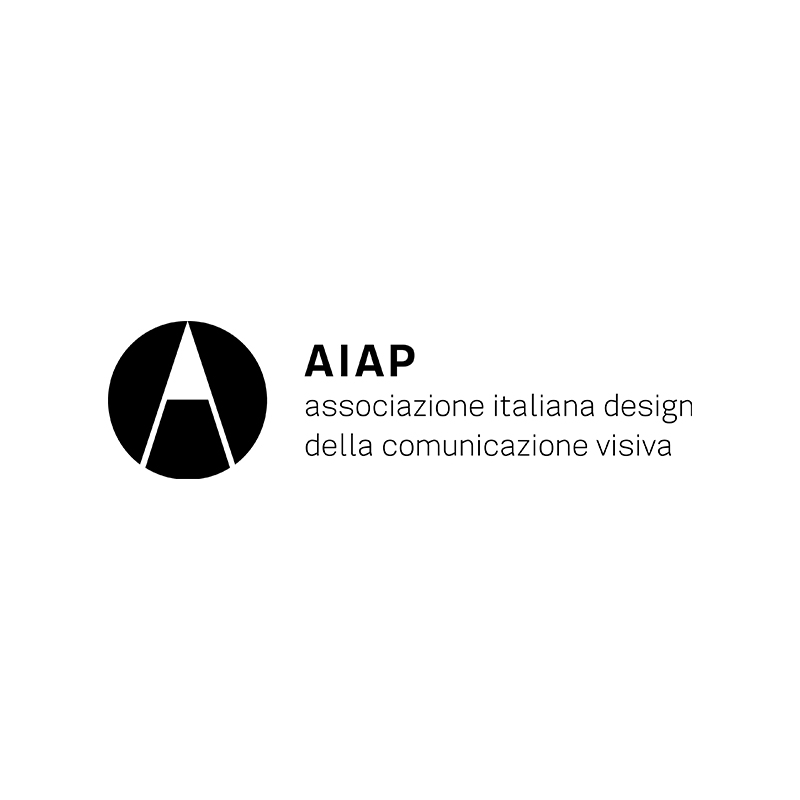
AIAP - Italian association of visual communication design, is the most important Italian association for the promotion, protection and development of the profession and culture of graphic design since 1945. Together with its members, AIAP promotes the culture and professionalism of visual communication design, collaborating with educational and business sectors and preserving the history of Italian graphic design in the Centro di Documentazione sul Progetto Grafico (Graphic Design Documentation Centre).
Aiap BIG Community 2024 is an event promoted by AIAP, open to graphic designers and member designers, whose aim is to identify and give visibility to a selection of the most relevant visual communication projects, and to increase the sense of community (collective growth, exchange, reflection, study, experimentation, innovation) of communication design. It is also the mise en scène of the communication object: the selected designers, and possibly their clients, will be invited to present their work in rotation in 10 minutes each, in front of a continuously moving audience. A moment of encounter that highlights contents and motivations, often revealing a hidden world: the backstage of the final result, made up of ferments and impulses, of dialogue with the client, of intuitions and unexpected evolutions.
Alessia Alberti is an art historian specialising in the history of drawing and printmaking. She is curator of the Gabinetto dei Disegni e della Raccolta delle Stampe "Achille Bertarelli" (Achille Bertarelli Drawings and Prints Collection) at Castello Sforzesco in Milan, where she is in charge of cataloguing and creating digital inventories of the institute's rich heritage.
To the sources: tools for designing and studying graphic design
The meeting develops into three connected moments intended to share, especially with young professionals and students, a research and project methodology that has graphic documents and documentary sources as its starting points.
The meeting takes place and starts from the collections of the Civica Raccolta di Stampe A. Bertarelli to then present recent publications, research, and exhibitions that address the issue of sources through different methods and perspectives: the series “Antologia di cultura grafica” by Lazy Dog Press, the project The Sources of Jan Tschichold’s “the New Typography” by ECAL, and IDA Investigating Digital Archives, a project by ISIA Urbino on documentary sources for visual communication available on the Web.
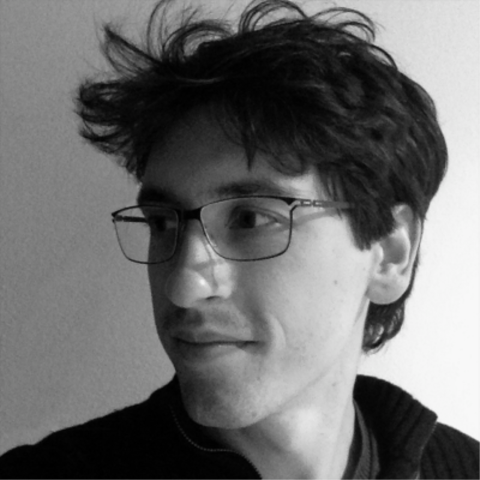
Andrea Amato graduated from Politecnico di Milano with a thesis on the history of sanserifs, and collaborated with Matteo Thun & Partners and Massimo Pitis. He is the owner of the Tipiblu studio, focusing on editorial design and brand identities. He published Sempione in 2017, the first of Tipiblu typefaces for the Foundry. He teaches typesetting and lettering at the Accademia Belle Arti Santa Giulia in Brescia and is a contract professor at Raffles Milano. He is a CAST Foundry member and its art director since 2018.
Fontstand, in collaboration with BIG, brings an extension of its International Typography Conference series to Milan.
Five speakers from renowned Italian type foundries and members of Fontstand will share the stage for this three-hour program of talks on type and typography. Hosted by Silvana Amato, President of AGI Italia, the conference will feature presentations by Beatrice D'Agostino, Matteo Bologna (muccaTypo), Cosimo Lorenzo Pancini (Zetafonts), Andrea Amato (CAST), and Giulio Galli (CAST), with a short introduction by Fontstand partner Andrej Krátky.
Readability doesn’t exist
Designing fonts means making communication tools available to designers. It also means building signs intended for reading. But do type designers’ choices influence reading? Can we really design something that ensures optimal readability and, at the same time, is a communicative form? From readability studies to the typographic tradition, a path that leaves endless possibilities open to designers.
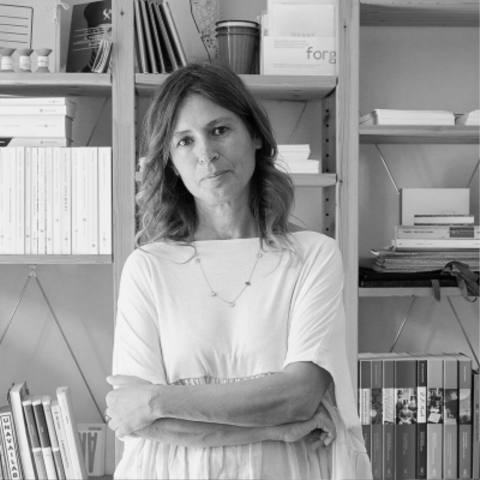
Silvana Amato lives in Rome where she mainly works as an editorial graphic designer, mostly developing projects in the cultural field. Her works are held in different public international collections. She has curated several exhibitions on the topic of writing. She teaches and lectures in various universities, such as Sapienza, Iuav, and Naba, since 2002. She is currently teaching at Urbino ISIA. She is one of the co-directors of the book series Scritture. She is the president of AGI Italy (Alliance Graphique Internationale).
Fontstand, in collaboration with BIG, brings an extension of its International Typography Conference series to Milan.
Five speakers from renowned Italian type foundries and members of Fontstand will share the stage for this three-hour program of talks on type and typography. Hosted by Silvana Amato, President of AGI Italia, the conference will feature presentations by Beatrice D'Agostino, Matteo Bologna (muccaTypo), Cosimo Lorenzo Pancini (Zetafonts), Andrea Amato (CAST), and Giulio Galli (CAST), with a short introduction by Fontstand partner Andrej Krátky.
Books inside as outside
Books inside as outside is an exhibition itinerary that highlights how book design begins and develops, which in the specific case of Silvana Amato, centers on a creative process that combines ideas and materiality on the same level, thus recovering a principle of refined craftsmanship alongside constant cultural research.
A design that is attentive to the specific situation and creates little, great, fantastic works of remarkable poetry and sensitivity. In the exhibition, about fifty prints of covers of the book series she edited for various publishing houses or cultural institutions (Laterza, 66thand2nd, Nuova consonanza, and so on) are accompanied by the corresponding visual captions describing them from the graphic design viewpoint. Also on display are other publishing projects in which the potential of experimentation around the form of writing is expressed, objects that offer an all-around look at the designer's always curious and careful graphic research.
The exhibition will be open until May 30.

Paola Antonelli joined The Museum of Modern Art in 1994 and is the Museum’s Senior Curator in the Department of Architecture and Design, as well as MoMA’s founding Director of Research and Development. Her work investigates design in all its forms, from architecture to video games, often expanding its reach to include overlooked objects and practices. Her exhibitions, lectures, and writings contemplate design’s intersection and interaction with other fields (from technology and biology to popular culture) and with life—that of individuals, communities, all species, and all planets. Her goal is to promote people’s und erstanding of design, until its positive influence on the world is universally acknowledged.
An architect trained at the Polytechnic of Milan and a pasionaria of design, Antonelli has been named one of the 25 most incisive design visionaries in the world by TIME magazine, has earned the Design Mind Smithsonian Institution’s National Design Award, has been inducted in the US Art Directors Club Hall of Fame, and has received the AIGA (American Institute of Graphic Artists) gold medal, the London Design Medal, and the German Design Award, amongother accolades.
Antonelli has curated shows at MoMA and in other international institutions, lectured worldwide in conferences ranging from TED to the World Economic Forum in Davos, and written copious essays and books. Following, among others, the 2019 XXII Triennale di Milano Broken Nature, devoted to the idea of restorative design, and the MoMA exhibitions Never Alone (2022, on video games and other interactive design) and Life Cycles (2023, on the materials of contemporary design), Paola is currently working on Design Emergency—the podcast and Instagram project she co-founded with Alice Rawsthorn in 2020
to highlight design’s role as key toward building a better future for all—and producing her renowned MoMA R&D Salons—thematic gatherings demonstrating the potential of museums as R&D departments for society.
Paola Antonelli © 2021 The Museum of Modern Art, New York. Photo: Peter Ross
The twentieth-century concept of Good Design—in all its different articulations—well-resolved functionality, clean elegance, simplicity, affordability was a step forward in the design of a better world, but it was still focused on individual humans, and unengaged with the consideration of equity and sustainability that we now consider imperative. Design for the Common Good is an altogether different dimension of theory and practice, as we will explore together.
The event is by reservation only.
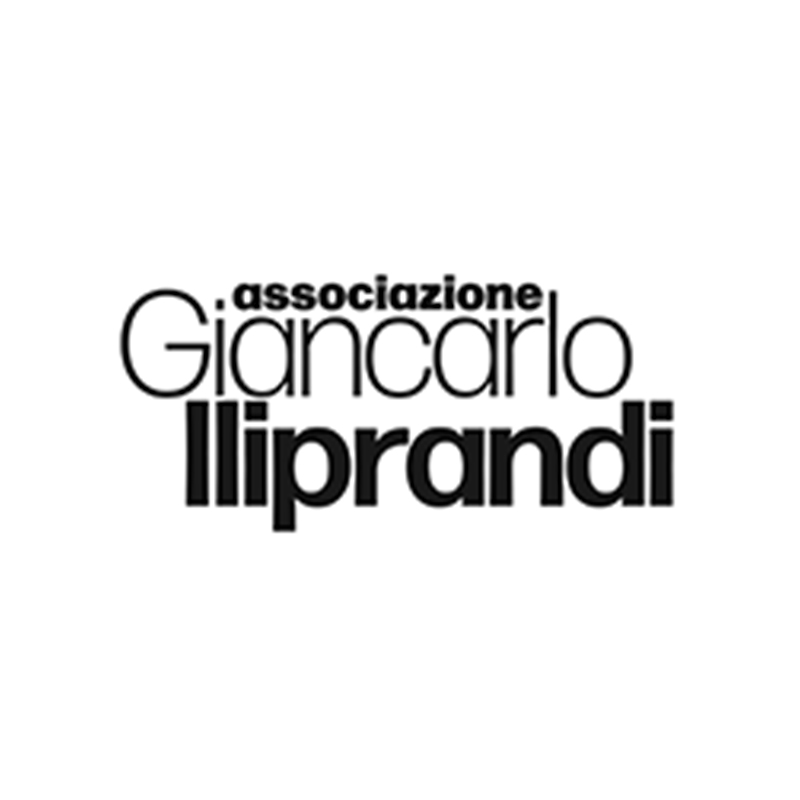
Friday 24 | 15.00/16.00/17.00
Saturday 25 | 10.00/11.00/12.00
Sunday 26 | 10.00/11.00/12.00
During BIG Biennale Internazionale Grafica 2024, Associazione Giancarlo Iliprandi opens to the public and shows the workplace and artworks of a master of Italian graphics. It is the professional studio where Iliprandi worked from the 1970s to 2016, on the ground floor of a building designed by Gio Ponti at Via Vallazze 63. The interior of the studio has remained unchanged and features an account of Iliprandi's graphic production.
Free admission with mandatory reservation via email to info@giancarloiliprandi.net indicating the time and number of people, maximum 8 per visit.
tel. 02 70600843
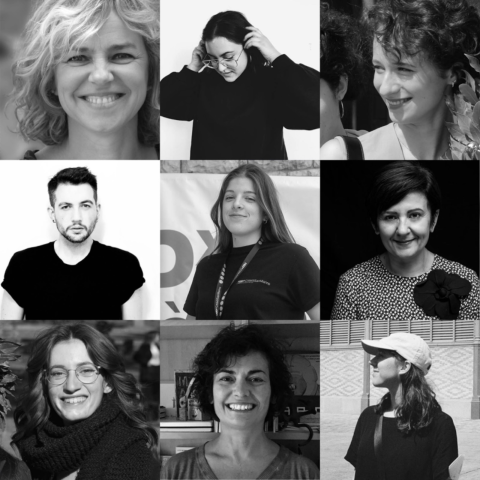
AWDA is a project started in 2012 by Cinzia Ferrara, Laura Moretti and Daniela Piscitelli. The current curators are Cinzia Ferrara, Laura Moretti and Carla Palladino, together with an under-30 team: Alice Bianco, Costanza De Luca, Angelica D'Errico, Benedetta De Rossi, Elia Maniscalco, Bianca Sangalli Moretti, Lucia Tonelli.
Project Leader: AIAP
Institutional Partner: ICoD
The exhibition features works selected and awarded in the fifth edition of the international award Aiap Women in Design Award, focusing on AWDA for Rights! and based on projects that address social themes such as women's rights, women's employment, and gender inequality and explore the political power of design. In a designated space, we will meet designers, researchers, and activists daily to expand the network.
On Thursday 23rd the exhibitions in Milano Certosa District will be open from 13.30 to 18.00
Miscela is the AWDA lounge in the Certosa Design District where you can freely participate in short meetings with activists, feminists, designers and planners to talk together and exchange ideas in an informal and stimulating atmosphere.
Just as a blend of fine coffees creates an intense and multifaceted aroma, our Miscela meetings will mix experiences and points of view on issues of our time.
The official sponsor of Miscela is MOAK, BIG's partner and renowned Italian coffee producer, which will provide AWDA with the opportunity to offer a moment of pause and recharge by tasting a premium coffee during the chats.
Follow the daily programme on AWDA social media, join the Miscela and we'll buy you a coffee!
Friday, May 24 at 11:00 a.m. - Meeting with AWDA 5th Participants
Friday, May 24 3:00 p.m. - Meeting with Sambu Buffa - Inclusive and Plural Marketing
Saturday, May 25 at 11:00 a.m. - Meeting with Giulia Bardelli - Studio ButMaybe
Saturday, May 25 3:00 p.m. - Meeting with Gianluca Seta - Lanifico Leo
Sunday, May 26 at 11:00 a.m. - Meeting with Cláudia Alexandrino - Illustrations Ladies Milano
Sunday, May 26, 3:00 p.m. - Meeting with Paolo Iabichino - Iabicus
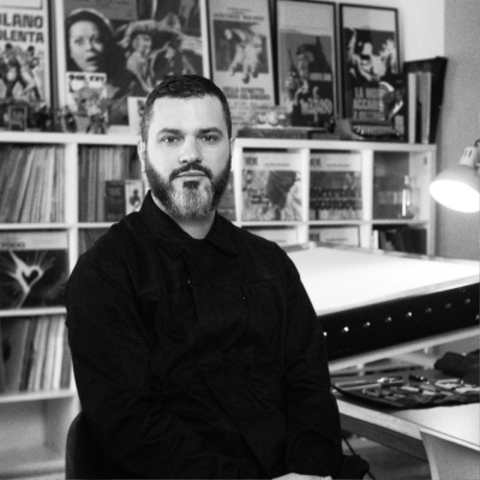
Luca Barcellona, Milan, born in 1978, is an artist, graphic designer and a leading name in the world of modern calligraphy. Trained as a writer and graphic designer, he was part of the hip hop movement of the 1990s, contributing as MC to the writing of several classics of the genre and to the Italian writing scene. A lifelong writing enthusiast, he came to professional calligraphy in 1999, trying his hand in every field of lettering, from type design, letterpress and engraving to experiments with virtual reality, combining the manual skill of an ancient art like writing with the languages and tools of the digital age. His lettering has been requested by many major brands in the fashion and clothing, discography, film, theatre and publishing sectors, as well as having worked for important museum commissions. He has been teaching calligraphy since 2007 with the Italian Calligraphy Association and at leading design schools (IED, NABA, Domus Academy) and has been teaching lettering and calligraphy at Raffles Design Milano since 2017. He has held workshops and conferences all over the world to disseminate calligraphic culture and his work in lettering, including the USA, Canada, Japan, Australia, Brazil and Argentina, Mexico and Turkey.
Library music albums are mainly unknown to the big public, but they have existed since the end of the 1930s, and in between their grooves, they hosted excellent composers and musicians; we are talking about theme music produced for TV and radio to provide all kinds of background music for various scopes - the score for a documentary, a radio drama or a commercial - without having to compose a soundtrack on purpose. Since these vinyl records were not on the market, their unavailability made them some of the most memorable collectibles. However, another feature is more obscure and exciting, and it concerns the graphics on the covers: there is no specific set of images for this kind of music, and one has to create it from scratch. In these records, the freedom of composition is unlimited, both from a musical and a graphic point of view. From the musical standpoint, only the general theme is often established from the beginning. From a graphic perspective, some series present basic graphics, where the only element changing is the title or the color; others present extremely whimsical and creative graphics to the limit of imagination. Luca Barcellona, a calligrapher and inveterate collector, selects and shows 100 of his collection's best and most representative library music covers to reveal the solid graphic and visual impact of these masterpieces.
On Thursday 23rd the exhibitions in Milano Certosa District will be open from 13.30 to 18.00
Library Music: a journey into dark and unknown music
"Library Music" refers to all the albums specially created for TV and the radio to synchronize and comment on documentaries, advertising, and other programs. Library Music includes all kinds of genres, from jazz to the most extreme funk, often composed by high-scale musicians under pseudonyms, an ideal terrain for unleashing the most incredible and free experimentations. Since they were not on the market, the original vinyl records from the 1970s and 1980s are now rare objects valued by collectors, reprinted and listened to by new generations. Luca Barcellona and Andrea Fabrizii, fond connoisseurs of the genre, take us to the discovery of the beautiful world of library music, which is also the main topic of the exhibition dedicated to the album covers. They will disclose the secrets and backstage of this hidden and fascinating world, following a DJ set of the best recordings from their collections. An unmissable event!
Dj Set by Luca Barcellona and Andrea Fabrizii following the talk Library Music: a journey into dark and unknown music.
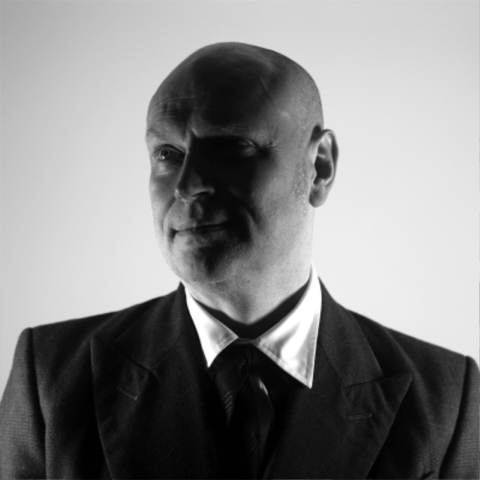
Jonathan Barnbrook is a British graphic designer known for his groundbreaking work in typography, design activism, and his collaborations with cultural icons such as David Bowie. Throughout his career, Barnbrook has challenged conventional design norms, pushing the boundaries of typography and visual communication. He gained widespread recognition for his subversive and politically charged designs, often critiquing consumerism, corporate culture, and social injustice. One of Barnbrook's most notable collaborations was with music legend David Bowie, for whom he designed album covers including Heathen, Reality, and the iconic Blackstar, released shortly before Bowie's death in 2016. His work with Bowie further solidified his reputation as a visionary designer. In addition to his commercial work, Barnbrook is also committed to design activism, using his talent to raise awareness about important social issues. He has been vocal about the responsibilities of designers in shaping the world around them and has contributed to projects advocating for environmental sustainability, human rights, and freedom of expression.
Barnbrook's lecture will span more than 35 years of his work, with a particular focus on his collaborations with David Bowie for album covers such as The Next Day and Blackstar. He will also explore the question of whether designers can influence societal change through their work, highlighting his contributions to the Anti-advertising collective Adbusters. Additionally, he will delve into his early forays into digital type design, discussing his creation of the typeface "Mason," which was released by Emigre and became one of the most widely used fonts of its time. Curated by the Communication and Graphic Design Area of NABA, Nuova Accademia di Belle Arti.
The talk will be in English.
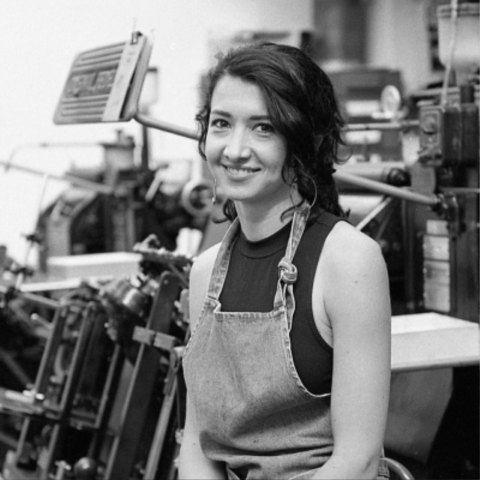
Veronica Bassini is a typographer and art historian. After graduating in History of Art from the Università degli Studi di Milano with a thesis on illustrated magazines and their production methods in late 19th-century Bologna and a diploma in Applied Arts from the Scuola Civica del Castello Sforzesco in art printing, she started Anonima Impressori, a traditional letterpress printing business and safeguarding Italy's typographic heritage. Anonima Impressori is still committed to the recovery and dissemination of typographic culture and printing techniques. She is running a workshop on printing techniques for cultural heritage since 2008 as an adjunct lecturer at the University of Milan and she is holding courses in typography, composition and printing for graphic designers since 2022 at the cfp Bauer school in Milan. She is a PhD in Contemporary Art History at the Università di Genova since 2022, working on the publishing material produced by private art galleries between 1960 and 1980.
Tales from the typographic lab
Bauer opens the doors of the Typography Workshop for a guided tour with a printing demonstration with Veronica Bassini of Anonima Impressori.
Free admission.
Ruedi Baur is a designer, teacher, researcher, citizen of a "World to change". Since the 1980s, Ruedi Baur has thought of his activity as a designer in the context of a civic space to be transformed. Initially working as a graphic designer for many cultural institutions, he organized transdisciplinary teaching in the 1990s based on critical research into the culture of design nourished by the practical experiences developed in his workshops. Claiming an interdisciplinary design very early on, he created the Integral network in 1989 and ran the workshops until 2023: Integral Ruedi Baur, Paris, Zurich and Berlin, then Integral designers. In 2004 he created and directed with the sociologist Vera Baur at the ZHdK in Zurich the Design2context institute, then in 2011 the Institute for critical research in design Civic-City; in 2018, the 10-billion-human university start-up. Its bibliography makes it possible to follow its course, in particular with books such as Architecture-graphics (1998), Des-Orientation 1 and 2 (2008-09) Signs for Peace, an impossible visual Encyclopedia (2012), Facing the territorial brand (2013), A World to change (2017) And suddenly the world was immobilized (2020)...
School of Non-Knowledge Exhibition
Bringing together projects from thirty different universities, design schools and design groups from all over the world, the Scuola del Non Sapere exhibition at BIG, Biennale Internazionale Grafica, is a small extract from this enormous confrontation with all the things we don't know, what we don't want to know, and what we have voluntarily or involuntarily forgotten. At a time when the world's leaders continue to assert that they don't know, it's up to designers to make these uncertainties intelligible, as well as to reveal these pretenses, to represent them, to make them explicit, and to consider them as a necessary basis for any truly democratic debate, as well as for any creation. The exposition presents several of this pedagogical panels done by the students of Communication and Graphic Design Area of NABA, Nuova Accademia di Belle Arti.
https://civic-city.org/nonsapere/
Curated by the Communication and Graphic Design Area of NABA, Nuova Accademia di Belle Arti and by Ruedi & Vera Baur and Susanna Cerri, Civic-City.
In these times of crisis, war and ecological uncertainty, design cannot simply continue to blindly support consumer society. Ruedi Baur, with the help of projects carried out in various structures (Integral designers, 10 milliards humains, Civic city and École du non-savoir), will present these questions on attitudes and methods linked to design.
The talk will be moderated by Vincenzo Estremo - Course Leader - PhD in Artistic Practice at NABA, Nuova Accademia di Belle Arti.
Organised by Area Communication and Graphic Design di NABA, Nuova Accademia di Belle Arti.
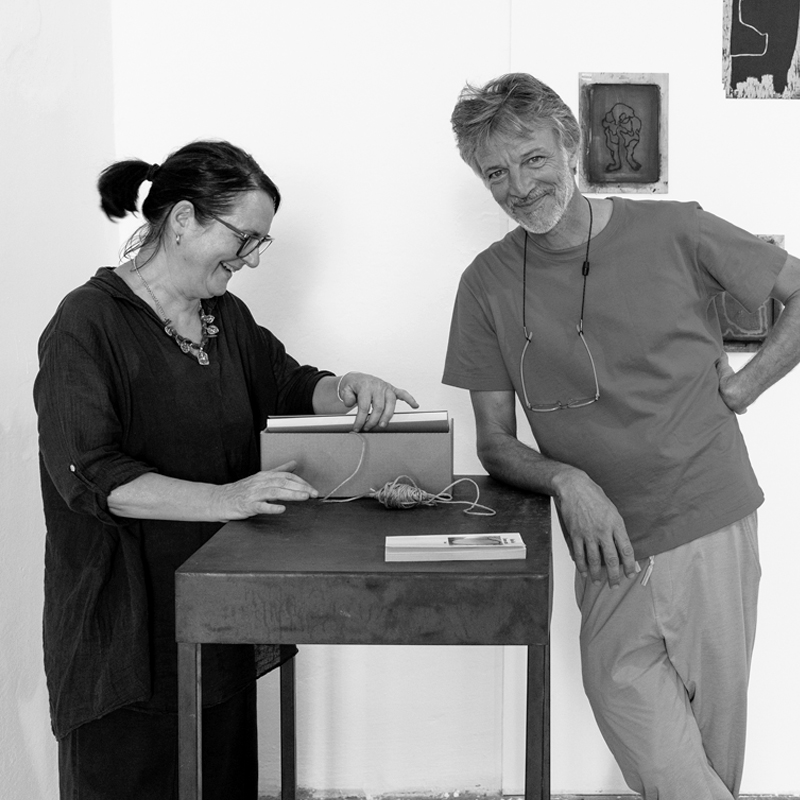
Cristian Boffelli was born in Vaprio d'Adda in 1972. He graduated from the Brera Academy of Fine Arts in 1996. He, together with four other craftsmen, founded in 2002 the social cooperative L.P.K., which deals with creative activities in the field of psychophysical disabilities where the working tools are ceramics, painting and engraving. He has also pursued a personal career in artistic research that sees him involved in various exhibition projects in Europe, Japan, India, Brazil and the United States. He currently lives between Italy and Japan.
The Box Man
Thursday 23 | 15.00 — 20.00
Friday 24 | 10.00 — 20.00
Saturday 25 | 14.00 — 20.00
Sunday 26 | 10.00 — 18.00
The artist's book is loosely based on Kōbō Abe's The Box Man, in Antonietta Pastore's translation (Einaudi, 1992); it contains ten engravings by Cristian Boffelli and Maura Cantamessa and opens with a short text by the translator (Bergamo and Tokyo, 2019-2023).
Boffelli and Cantamessa are Italian artists, friends who have been engravers for many years, who bring to life their passion for Japanese culture and art printing by confronting the words of Kōbō Abe and his novel The Box Man.
The mysterious simplicity of the text's progression brings to life, inside a box, the shyness of a man hidden from the world and curious about the world.
The chosen language is that of art prints: xylography, chalcography, and silkscreen prints paired with or superimposed on the author's words in Italian and Japanese in search of a new, different image able to express the poetry of the three authors in dialogue with each other.
Leafing through the artist's book, which is collected in a box, unbound, one creates a reading rhythm made up of solids, voids, words, dark spots, and colored traces in an attempt to bring back the poetry of being human, its profound beauty.
The exhibition presents matrices and prints in dialogue with each other and the written text.
The printed sheets hanging on the wall refer to the lightness of the pages while also adapting to the context in which they are displayed.

Matteo Bologna is the founder and creative director of the Brooklyn-based branding studio, Mucca, a singular personality whose multidisciplinary background in architecture, graphic design, illustration and typography has helped him build one of the most respected design companies in the United States. Over the course of his distinguished career, Matteo's design approach has earned him strong partnerships with clients in countless industries, from startups, small retailers, and beauty powerhouses to hospitality, where he has designed for several renowned hotels and restaurants. These include Sephora, Barnes & Noble, Target, WeWork, Rizzoli Libri, Whole Foods, Shinsegae, Glyphs, Chora Media and many more. Matteo is also a former board member of AIGA/NY, a professor at the School of Visual Arts and, Kean University and chairman emeritus of the Type Directors Club.
Fontstand, in collaboration with BIG, brings an extension of its International Typography Conference series to Milan.
Five speakers from renowned Italian type foundries and members of Fontstand will share the stage for this three-hour program of talks on type and typography. Hosted by Silvana Amato, President of AGI Italia, the conference will feature presentations by Beatrice D'Agostino, Matteo Bologna (muccaTypo), Cosimo Lorenzo Pancini (Zetafonts), Andrea Amato (CAST), and Giulio Galli (CAST), with a short introduction by Fontstand partner Andrej Krátky.
Branding a food hall with 14 food venues, 400+ products, and a Market and Grocery by using just one font and not making it boring. A single font can have incredible brand-building potential, especially when pushed to its limit. There’s no more perfect example of this than within the Tin Building, Michelin-award-winning chef Jean-Georges Vongerichten’s new marketplace at the former site of NYC’s historic Fulton Fish Market, featuring 14 food venues with restaurants and two grocery stores and locally sourced meats, cheeses, seafood, and grocery items. The varied branding and designs deceptively feature one font throughout the sprawling facility, representing a wide range of voices, cultures, tones, and uses – exemplifying how each font has limitless applications that can help create entire worlds. Hosted by Mucca’s founder Matteo Bologna, this talk will focus on the creation of Tin Building’s No Exit Octagonal (a custom typeface inspired by past Fulton Fish Market vendors) and its broad and varied use across the brand and sub-brands (from signage to digital to packaging and more), showing the power and flexibility of building a brand on a foundation of a single typeface.
In this two-day class, you will learn the basics of designing and generating a variable font with the font-design software Glyphs (Mac only). Go beyond choosing the same typefaces from the type menu to creating your own!
On the first day, we will learn the basics of drawing a font, generate the font, and use it in an Adobe app or a web browser. In the afternoon, we will add additional letters to the font, learning how to space them, add diacritics and punctuation. (You can purchase a one-day ticket for this day only).
On the second day, we will add more letters, design a bold version of the same typeface, create a variable font—and make it animate in a web browser.
At the end of the class, you will probably not have a finished font, but a respectable start and a deep understanding about how fonts are made. And maybe you’ll become a type design addict. You have been warned.
May 23 | Room C0.4 from 9.00 to 12.30 / room A0.3 from 14.00 to 17.00
May 24 | Room T.1.1 from 9.00 to 17.00
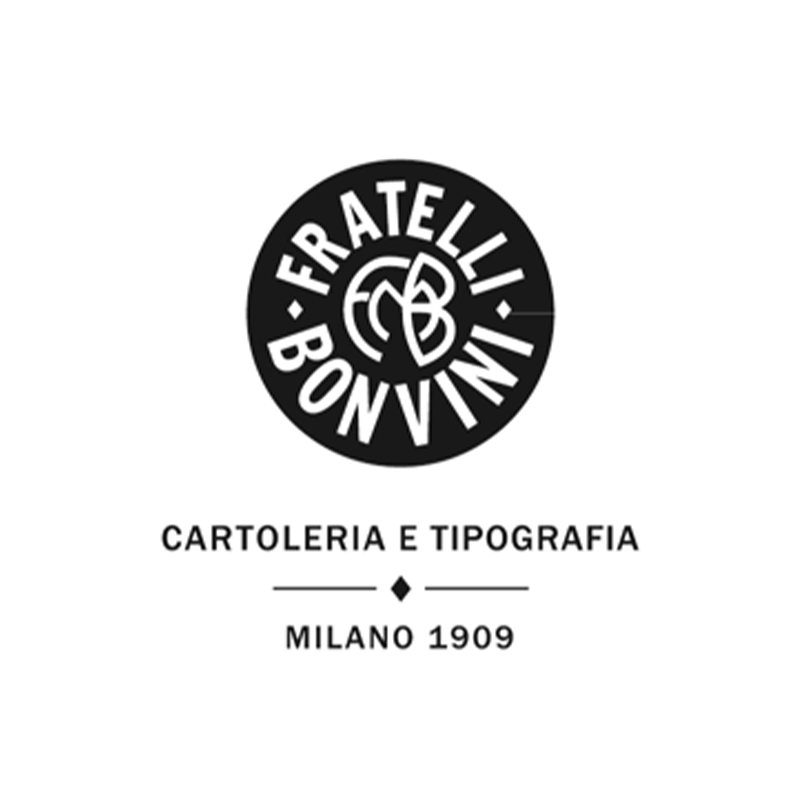
Bonvini 1909 is a cultural and creative company born from the recovery of the old stationery and typography shop Fratelli Bonvini Milano, historic shop founded in 1909.
DISTRAZIONI. Illustrations by Beppe Giacobbe
The exhibition displays more than sixty works by Beppe Giacobbe, many of which are unreleased. In addition to the series Ritratti Accidentali (Accidental Portraits), commented by Edgardo Franzosini, the collaboration for Lettura, from 2012 to this day, and other images created for exhibitions and editorial covers are exhibited.
A «subtractive and essential» work (quoting Franco Achilli from the exhibition catalog) which, interpreting and translating, continuously produces new questions and metaphors.
«An illustration is there even when it is not. It makes its necessity felt, it prepares its appearance» (quoting Marco Del Corona from the exhibition catalog)."
the exhibition will open on May 8 and will go on until July 13 from 10.30 to 13.00 and from 14.00 to 19.30.
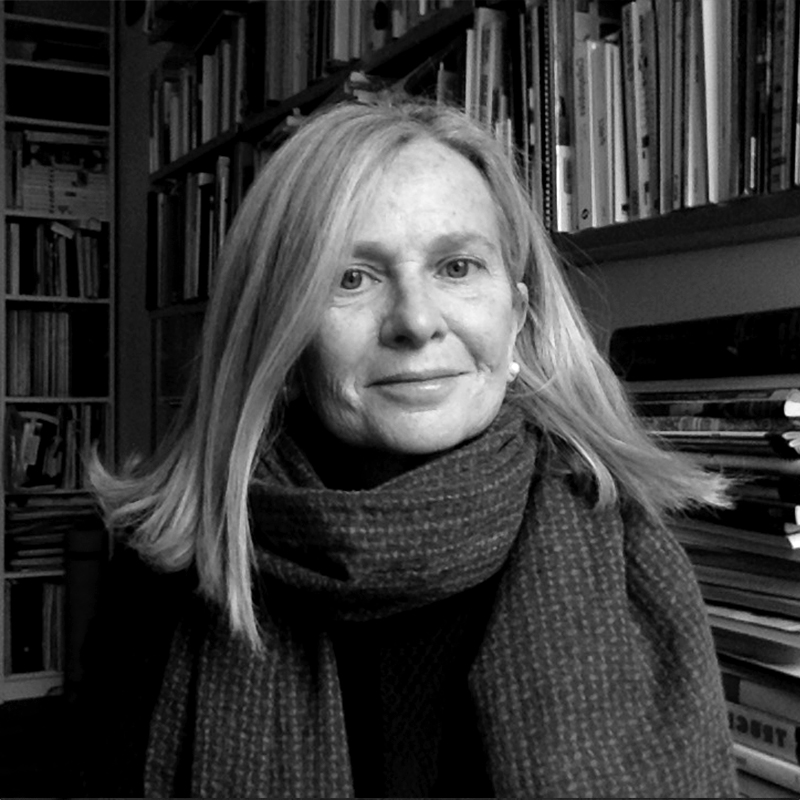
Valeria Bucchetti is a visual designer, Phd in Design. She is a Design professor (Politecnico di Milano), coordinator of Communication Design programme, lecturer of Communication Design and Gender Culture course. She is a member of the PhD Design programme board, of the scientific council at Centro di Ricerca Interuniversitario Culture di Genere, of the editorial board of the series Design della comunicazione (FrancoAngeli). She received the Compasso d'Oro award (1998) as co-author of the multimedia catalogue for Museo Poldi Pezzoli.
Communication Design: a discussion about research
Valeria Bucchetti, Cinzia Ferrara, Carlo Martino, and Paolo Tamborrini, representatives of the research team “Design della comunicazione” of SID (Società Italiana di Design), dialogue with young researchers on the forms of experimentation that the university promotes to support the discipline's evolution.
We say stop. Graphic design to fight violence against women
Forty posters on display, created by the communication design student community to be actively involved in the fight against gender-based violence, a socially relevant, topical, and urgent issue.
Through a call for posters, the young designers had the opportunity to make their voices heard by deploying the tools, methods, and languages of graphic design to counter and prevent the multiple forms of violence acted by men against women.
The exhibition is curated by Francesca Casnati, Department of Design, Politecnico di Milano.
The project is curated by DCxCG - Design della comunicazione per le culture di genere; scientific responsible: Valeria Bucchetti, Department of Design, Politecnico di Milano"
The exhibition will continue until June 28.
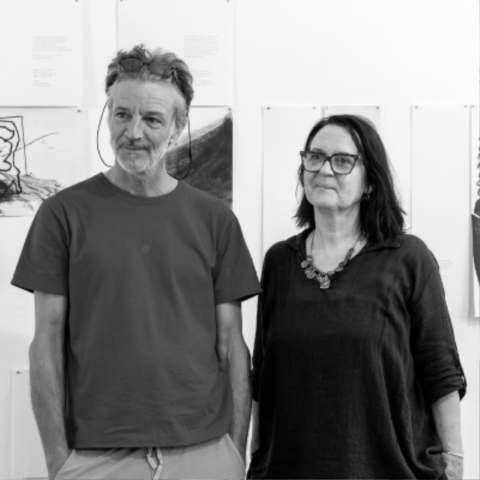
Maura Cantamessa graduated from the Brera Academy of Fine Arts. She studied chalcographic engraving since 1989, working on the concept of engraving related to the word and the book. From 1997 to 2007, she was the owner of Edizioni El Bagatt, a publishing house focused on the production of limited edition artist's books. She has collaborated many times with poets and writers - including Fabrizio De André, Claudio Magris, Yves Bonnefoy and Dario Fo - for the creation of artist's books that are part of her varied research path. He lives and works in Bergamo.
The Box Man
Thursday 23 | 15.00 — 20.00
Friday 24 | 10.00 — 20.00
Saturday 25 | 14.00 — 20.00
Sunday 26 | 10.00 — 18.00
The artist's book is loosely based on Kōbō Abe's The Box Man, in Antonietta Pastore's translation (Einaudi, 1992); it contains ten engravings by Cristian Boffelli and Maura Cantamessa and opens with a short text by the translator (Bergamo and Tokyo, 2019-2023).
Boffelli and Cantamessa are Italian artists, friends who have been engravers for many years, who bring to life their passion for Japanese culture and art printing by confronting the words of Kōbō Abe and his novel The Box Man.
The mysterious simplicity of the text's progression brings to life, inside a box, the shyness of a man hidden from the world and curious about the world.
The chosen language is that of art prints: xylography, chalcography, and silkscreen prints paired with or superimposed on the author's words in Italian and Japanese in search of a new, different image able to express the poetry of the three authors in dialogue with each other.
Leafing through the artist's book, which is collected in a box, unbound, one creates a reading rhythm made up of solids, voids, words, dark spots, and colored traces in an attempt to bring back the poetry of being human, its profound beauty.
The exhibition presents matrices and prints in dialogue with each other and the written text.
The printed sheets hanging on the wall refer to the lightness of the pages while also adapting to the context in which they are displayed.
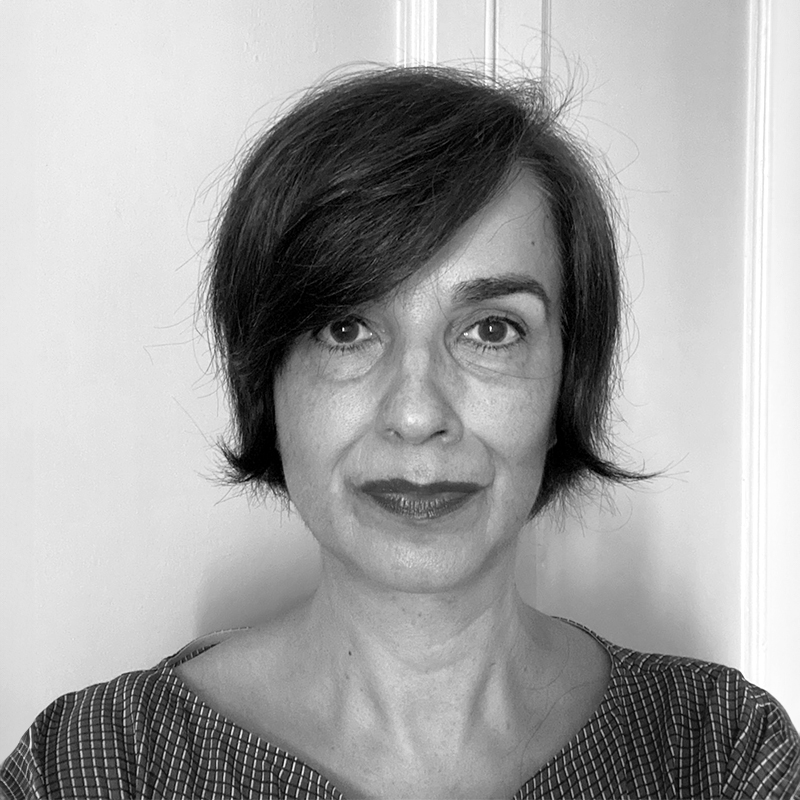
Associate professor at the Department of Design, Politecnico di Milano. Editorial design, reinterpreted through the translation paradigm, is one of the themes at the centre of her research and experimental design activities. She is co-curator of the book Design è traduzione (Franco Angeli, 2016) which received an honourable mention at the 25th edition of the Compasso d'Oro ADI.
DDC Words on pause
Through three dialogues, we propose an exchange between different generations of communication designers to offer an overview of the multiple professional trajectories of the past two decades and to discuss the transformations of the discipline between theory, training, and practice. This is an opportunity to improve one's knowledge and network and gain inspiration.
Initiative by the Course of Studies in Communication Design, Politecnico di Milano
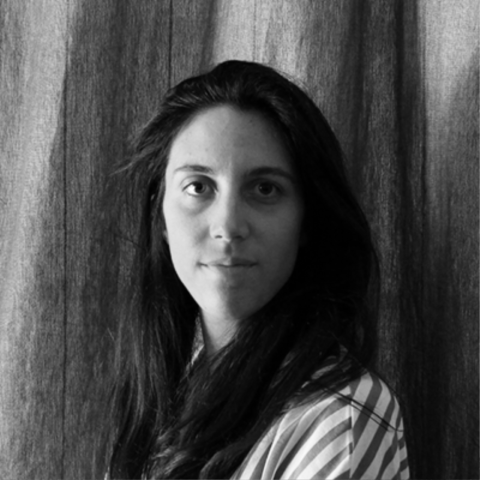
A research fellow at the Department of Design, Politecnico di Milano, her area of interest lies at the intersection of Communication Design, Gender Studies and Feminist Studies. She is a member of the research group DCxCG, Design della Comunicazione per le Culture di Genere (Communication Design for Gender Cultures) since 2018, and collaborates with the scientific council Centro di Ricerca Interuniversitario Culture di Genere. She is the coordinator of the project We say stop. Graphics to counter violence against women.
We say stop. Graphic design to fight violence against women
Forty posters on display, created by the communication design student community to be actively involved in the fight against gender-based violence, a socially relevant, topical, and urgent issue.
Through a call for posters, the young designers had the opportunity to make their voices heard by deploying the tools, methods, and languages of graphic design to counter and prevent the multiple forms of violence acted by men against women.
The exhibition is curated by Francesca Casnati, Department of Design, Politecnico di Milano.
The project is curated by DCxCG - Design della comunicazione per le culture di genere; scientific responsible: Valeria Bucchetti, Department of Design, Politecnico di Milano"
The exhibition will continue until June 28.
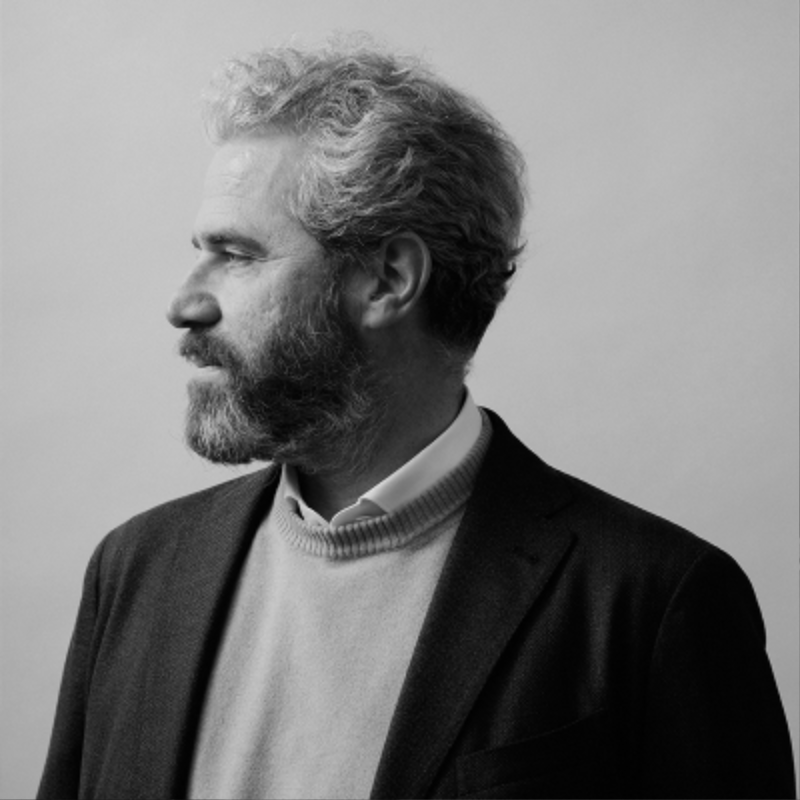
Francesco Ceccarelli was born in Modena in 1971. He is an architect, art director and book designer. He is co-founder and creative director of Bunker since 2006 and art director of Lazy Dog, a publishing house specialising in design books, typography, illustration and photography, since 2014. The studio's clients include: Feltrinelli, Il Sole 24 Ore, Maxxi, AIE, Franco Cosimo Panini, Fondazione Reggio Children, Donnafugata, Flos, DePadova, Carraro, Saleri. As book designer he edited, among others, the volumes Olimpia Zagnoli - Caleidoscopio, Pittori di cinema, L'Italia insegna, Bob Noorda. Una vita nel segno della grafica, L'architettura degli alberi and Franco Fontana. Invisiblie. He is a senior member of AIAP since 2017.
Presentation of the book "Incontri" by Armando Milani for Lazy Dog Press.
The biography of Armando Milani, the world-famous designer, is outlined through anecdotes and images of a hundred fortuitous and unexpected yet wanted and desired encounters that most influenced his work and inspired his creative choices. On the side of each encounter’s story, we find a picture or an artwork related to the character that is in perfect harmony with the expressive style of Milani: to communicate an immediate message, enchanting the eye to reach the heart. Vico Magistretti’s clothespin, Jack Nicholson’s cherries, Paul McCartney’s Happy New Year on the beach, Pelè’s goals, Muhammad Ali’s handshake, Alberto Sordi’s markets, Umberto Eco’s drunken sailors. Milani dancing with Mariangela Melato, and his wife waltzing with Saul Steinberg.
There emerges a mosaic scattered with stories that allow us to reach the deep end of Armando Milani’s biography and his message to us, identified by the founding features of his expressive research: at the base of these encounters, one can find ethics, friendship, the desire and necessity to communicate. It is one of the reasons why his graphic sign is so special. It reaches the essence of things, becoming everlasting and timeless.
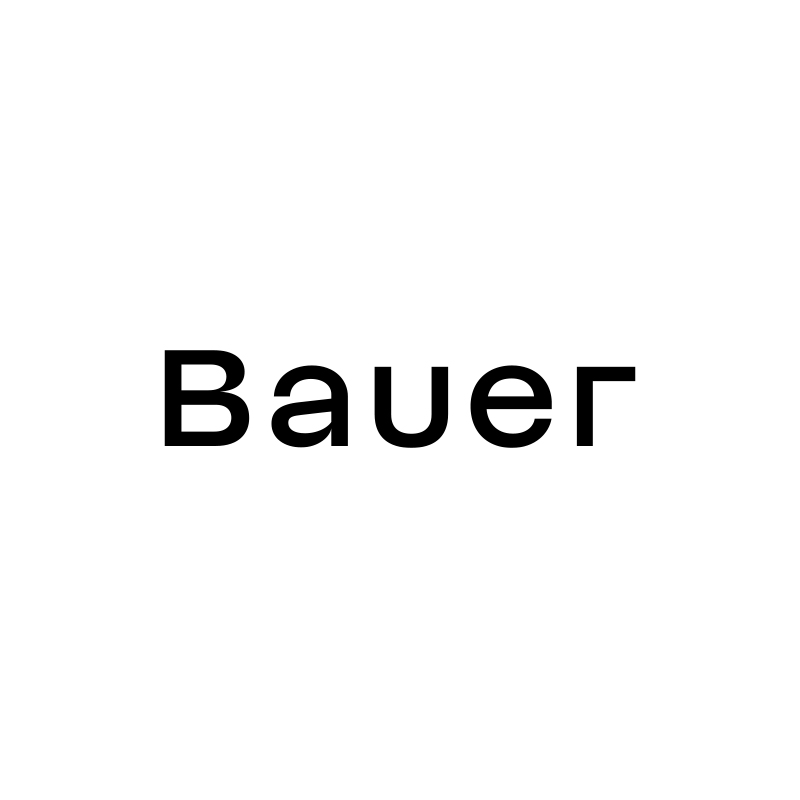
Tales from the typographic lab
Bauer opens the doors of the Typography Workshop for a guided tour with a printing demonstration with Veronica Bassini of Anonima Impressori.
Free admission.
Visual systems for culture
The workshop consists of representing a route by highlighting and relating its objective data (Google Maps route, street names, carriage number, kilometers traveled, etc.) and its subjective data (the balcony in bloom, the billboard, the names of the neighbors in the subway seat, photos of the buildings that attract attention, etc.).
Workshop participants will be asked to gather such input on their way to Bauer through findings, notes, and photos, which will help compose and print the road map. No reflection, only distraction is needed.
Max number of participants: 12
CV and portfolio submission: no later than May 13 by sending an email to comunicazionevisiva.bauer@afolmet.it
Selection outcomes: May 15
Cost: Free of charge
Participants will be asked to create modular lettering, thereby gaining an understanding of the fundamentals of topography, which will be useful for the larger designing of a typeface.
Previously selected modules will be provided and used to compose new lettering through scanning from a photocopier or scanner, thus simulating the photocomposition technique.
Max number of participants: 12
CV and portfolio submission: no later than May 13 by sending an email to comunicazionevisiva.bauer@afolmet.it
Selection outcomes: May 15
Cost: Free of charge
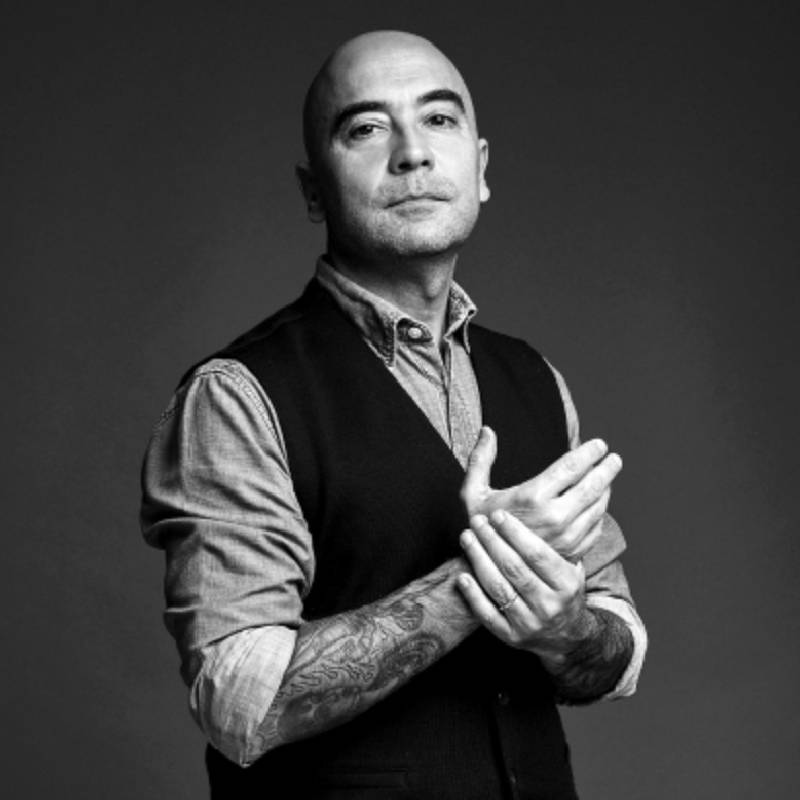
He has always been in the world of newspapers: in 2001 he arrived at the daily newspaper il Manifesto. In 2004 he arrived at the daily newspaper La Repubblica, designing sections and special projects of the newspaper (La Domenica di La Repubblica, R2, libri di La Repubblica) and two graphic restyling (2007 and 2014). Since February 2018, he has been Art director of the weekly L'Espresso. He teaches Editorial Graphic, Infographic and Visual Communication History at Rufa - Rome University of Fine Arts, at the Scuola di Giornalismo in Urbino, at Mimaster in Milan and participates in conferences and workshops. His work is his passion: he is convinced that working with images is the greatest fortune that can happen. And this is what he tries to teach his students.
Grafica Magazine: why we still need paper
Presentation of Grafica Magazine, a quarterly paper magazine focusing on graphic design and the disciplines revolving around the world of visual communication. The first issue will be released in September 2024.
The topic will be the future of newspapers and the independent publishing industry.
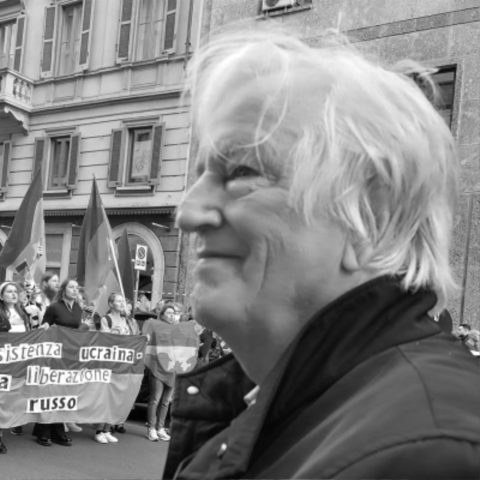
James Clough studied typography in London and is working in Milan since 1971 as a designer, calligrapher, lecturer and historian of typography. In addition to his lectures in Italy, he has taught in England, several European countries and the USA. He is the author of Alfabeti di legno, 2014 (the first history of wooden characters in Italy) and L'Italia insegna, 2015. He wrote a weekly column from 2016 to 2019 for the Italian newspaper La Repubblica.
Presentation of the book "Fonderia Caratteri Nebiolo, 1878–1978. Nuovi studi critici" by Nebiolo History Project
The Nebiolo Society of Turin was Italy's most important typeface foundry. Between the 1930s and 1970s, its art studio - directed by Giulio Da Milano, Alessandro Butti, and Aldo Novarese - designed typefaces that marked the history of Italian graphic design and beyond. The dispersion of archives has made an initial critical assessment of the company's historical heritage difficult, and the international conference Fonderia Caratteri Nebiolo, 1878-1978. Nuovi studi critici held in Turin in September 2021 addressed this issue. The Nebiolo History Project (NHP)—composed of Alessandro Colizzi, Riccardo Olocco, James Clough, Riccardo De Franceschi, Marta Bernstein, and Massimo Gonzato—organized the conference and edited the recent publication of the proceedings. The published proceedings (Lazy Dog Press, 2023) finally make available a broad overview of the most up-to-date research on aspects of the historic Turin-based company that have been little investigated so far. Aimed at scholars, graphic designers, type designers, typographers, and typophiles in general, the volume Fonderia Fonti Nebiolo, 1878-1978. Nuovi studi critici is rich in images and well-documented evidence. It collects original language contributions from Italian and foreign speakers and is intended to give new impetus to historical research on Nebiolo.
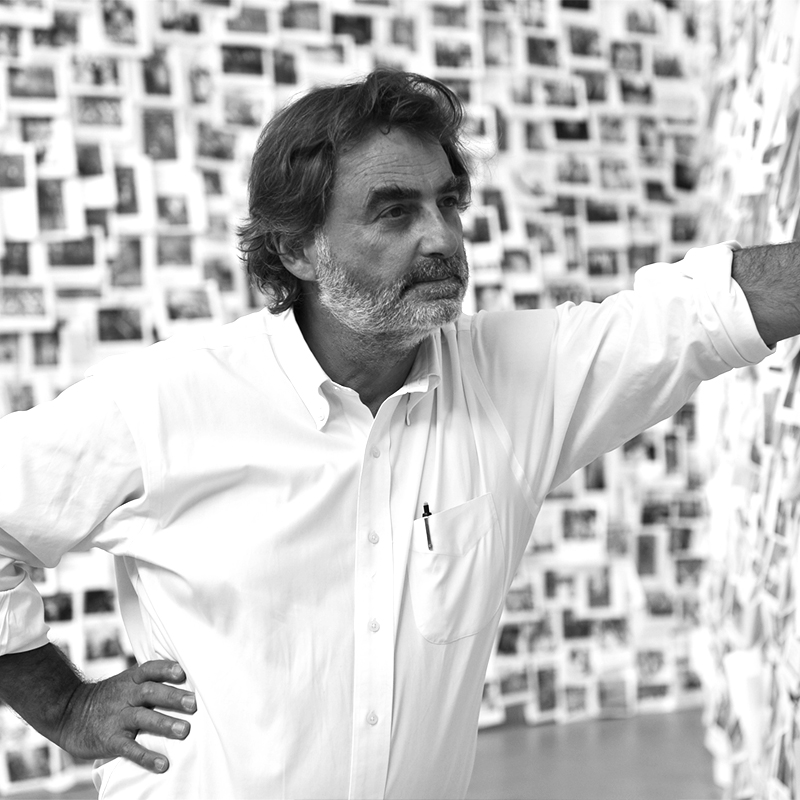
Gianluigi Colin (Pordenone, 1956) is an artist, journalist, critic and for many years was art director of Corriere della Sera, where he is currently cover editor of la Lettura. An eclectic figure, for many years he has been conducting artistic research with a strong ethical commitment, using materials existing between the present and memory.
Designing a vision
Gianluigi Colin, one of the founding members of the cultural supplement of the Corriere della Sera explains the genesis of a dialogue project between art and journalism, unique on the international scene.
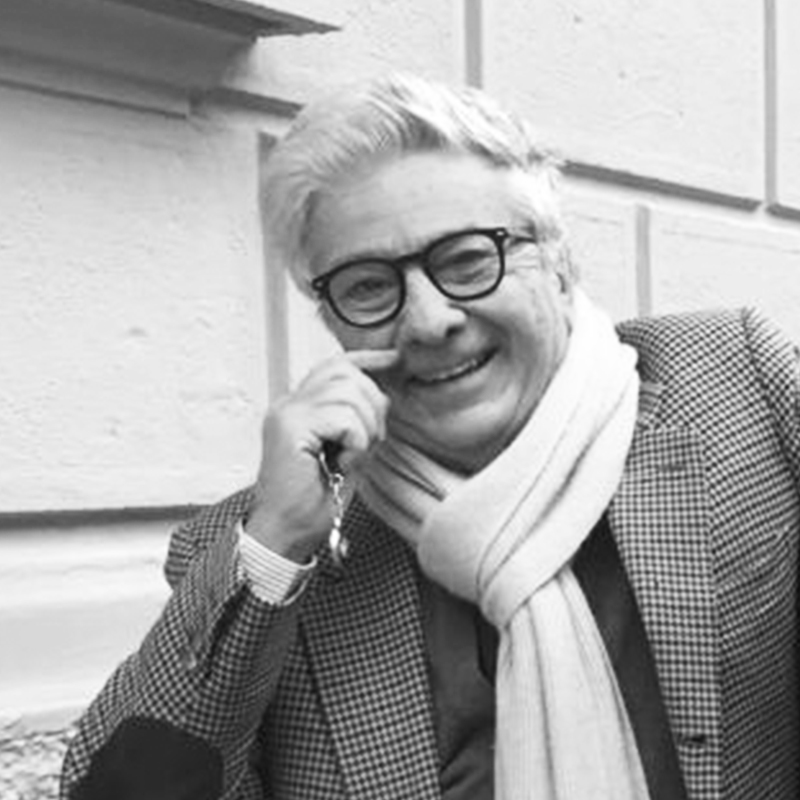
Aldo Colonetti, philosopher, studied with Gillo Dorfles and Enzo Paci. Scientific Director of IED (1985-2013), since 2014 Professor of high renown at Politecnico di Milano. Director of Ottagono magazine (1991-2014), he has been a member of the Scientific Committee of the Milan Triennale, (2002-2006); of the ADI Presidential Committee, (1991-1992;1998-2002); of the National Design Council, Mibact (2008-2011). He collaborates with Corriere della Sera; he is a member of the Advisor Board of the 3M Foundation, of the Gualtiero Marchesi Foundation, of the CDA of the Ragghianti Foundation, Lucca. Author of essays and curator of exhibitions in Italy and abroad.
Presentation of the book "Segni Migranti" by Mario Cresci
«The book in front of you and that I have browsed through several times, I believe, should be read as a system of associations proposed by the author and to be discovered slowly; just like in the book, instead of proposing a historical survey and analyzing Cresci's research in chronological order, a branched, articulated path is proposed, dense with parentheses and internal connections, associations of images and patterns for reading the real». (A.C. Quintavalle)
Segni migranti is the graphic trace of the sign/drawing, which coexists with the historical reality of the human condition and that of the contemporary migrant. Leaving the Sign indicates the power of a compelling and robust action and idea. Mario Cresci's book contains stories in the form of signifying signs and presents itself as an archive of personal and collective images - these images are a litmus test, intended as a mirror reflecting the searches for meaning that follow the times and lived experiences in individual social contexts, within the community, and within things.
Presentation of the book "50 anni di progetti grafici a Milano" by Emilio Fioravanti
The book presents, in 264 pages, the graphic projects realised from 1968 to 2023 for the Piccolo Teatro and La Scala, major exhibitions at Palazzo Reale, cultural events, museums, furniture companies and important companies in the private sector. The result is a visual testimony, through communication tools, of a very important period for the city's cultural activities: the second half of the last century up to the first decades of the 2000s.
Designing a vision
Gianluigi Colin, one of the founding members of the cultural supplement of the Corriere della Sera explains the genesis of a dialogue project between art and journalism, unique on the international scene.
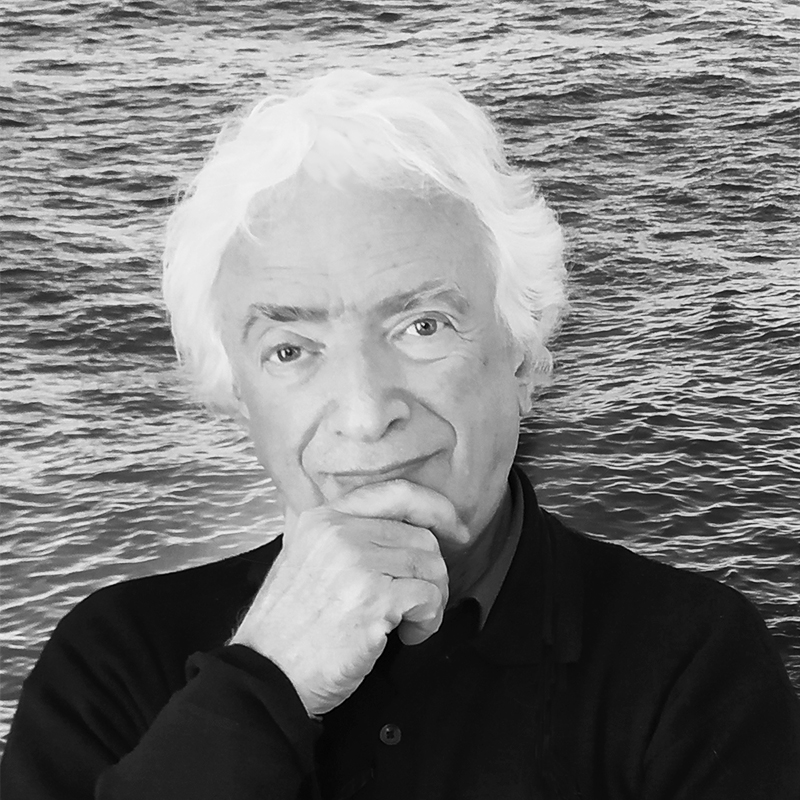
Mario Cresci is a photographer, visual designer and lecturer at the Università ISIA in Urbino. He has investigated the potential of the language of photography, verifying it with the most up-to-date methodologies of contemporary artistic research. He theorised and practised since the 1960s contamination between different expressive disciplines: photography, drawing, installation, performance, video. Some of his photographs are part of the MoMA collection in New York since 1974.
Presentation of the book "Segni Migranti" by Mario Cresci
«The book in front of you and that I have browsed through several times, I believe, should be read as a system of associations proposed by the author and to be discovered slowly; just like in the book, instead of proposing a historical survey and analyzing Cresci's research in chronological order, a branched, articulated path is proposed, dense with parentheses and internal connections, associations of images and patterns for reading the real». (A.C. Quintavalle)
Segni migranti is the graphic trace of the sign/drawing, which coexists with the historical reality of the human condition and that of the contemporary migrant. Leaving the Sign indicates the power of a compelling and robust action and idea. Mario Cresci's book contains stories in the form of signifying signs and presents itself as an archive of personal and collective images - these images are a litmus test, intended as a mirror reflecting the searches for meaning that follow the times and lived experiences in individual social contexts, within the community, and within things.
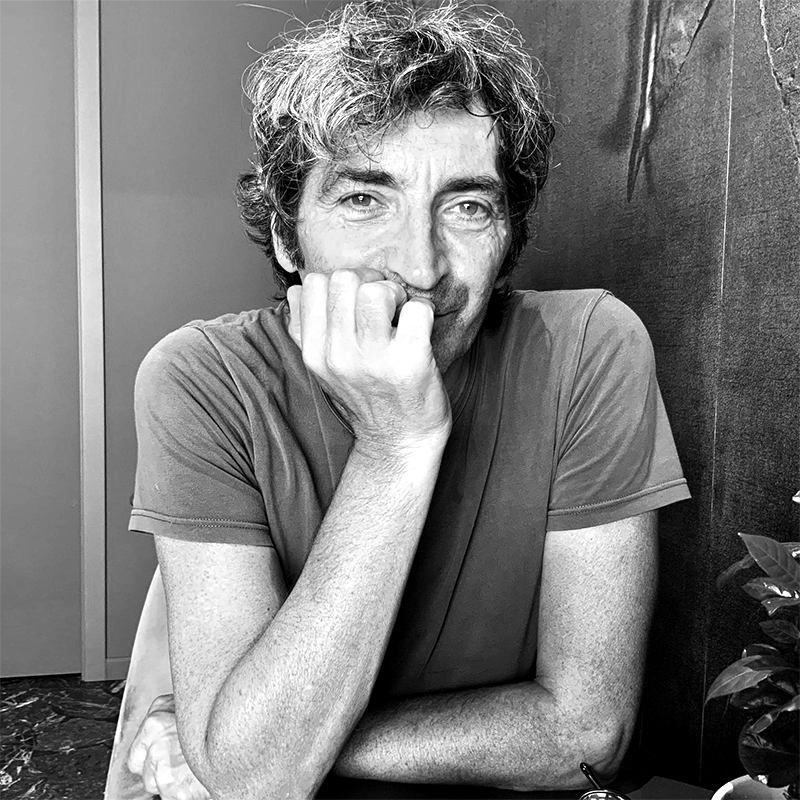
Elvis Crotti is a computer scientist, inconsolable tourist and passionate reader. His short stories can be read in some literary magazines and several anthologies. In May 2012, his first book entitled: Juke box per uomini soli was published by Excogita Editore, Milan. 10 years later he published for PxC publisher the book: La scuola di haiku per corrispondenza di Keta Funazaki. He is co-founder of the publishing series Orme Timide. He is a member of the research group Trame Educative at Milano-Bicocca University.
The Red String
Talk/workshop and presentation of the Orme Timide series for PxC.
Those who design in PxC have a passion for manual skills and if they think of a book, in addition to designing its typography as a "crystal goblet", they ask themselves what paper I will choose, how I will cut it, how I will fold it, how I will sew it. This workshop will go through the times and ways of creating a book; from the design to the composition to the final binding. The Orme Timide series aims to create and promote a series of artists' books where the written word, the prose story or the poetic composition are the narrative focus that will be renewed with each new publication. Words and images (photographs, collages, silkscreen illustrations) will merge into the flow of the story. Each individual book project will develop and enhance this bond by using different formats, materials and types of binding, making the analogue and digital worlds coexist without constraints.
Orme Timide has published three limited/numbered edition artist's books in batches of 50 copies each.
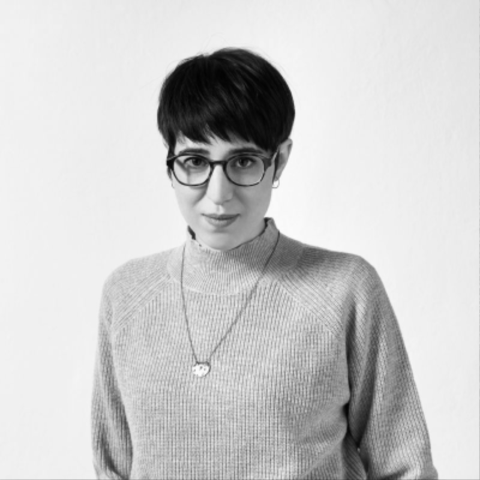
Freelance type and graphic designer, she studied at Politecnico di Milano, graduating first in Fashion Design and later in Communication Design. She developed her passion for type design in Berlin, working for two years for Bureau Christoph Dunst. She has been working as a freelancer in Milan since 2016, dealing with both custom and logo typeface design and typography in general. In 2020 the typeface Iki Mono with Cast Foundry.
Fontstand, in collaboration with BIG, brings an extension of its International Typography Conference series to Milan.
Five speakers from renowned Italian type foundries and members of Fontstand will share the stage for this three-hour program of talks on type and typography. Hosted by Silvana Amato, President of AGI Italia, the conference will feature presentations by Beatrice D'Agostino, Matteo Bologna (muccaTypo), Cosimo Lorenzo Pancini (Zetafonts), Andrea Amato (CAST), and Giulio Galli (CAST), with a short introduction by Fontstand partner Andrej Krátky.
Unconventional typography, a teaching method
Typefaces are defined by variables that in their infinite combination give shape to ever-changing letters and shapes. What happens when an unconventional parameter comes into play? Unconventional typography can become a teaching method for designers approaching the world of type design for the first time.
Participants will be asked to create modular lettering, thereby gaining an understanding of the fundamentals of topography, which will be useful for the larger designing of a typeface.
Previously selected modules will be provided and used to compose new lettering through scanning from a photocopier or scanner, thus simulating the photocomposition technique.
Max number of participants: 12
CV and portfolio submission: no later than May 13 by sending an email to comunicazionevisiva.bauer@afolmet.it
Selection outcomes: May 15
Cost: Free of charge
Maddalena Dalla Mura, associate professor at the University Iuav di Venezia, studies design and graphic design history, with a particular interest in design historiography and mediation. She is president of the Associazione italiana storici del design - AIS/Design (2021-25).
People’s graphic design? - Conversation about the social and public history of graphic design
How do we trace and bring out the voices of users and consumers in the history of graphic design? What artifacts, narratives, and memories come to light when historical design reconstruction becomes public or social? In recent decades, thanks in part to the possibilities offered by digitalization and the Web, there has been growing attention on more inclusive historical approaches, participatory archival practices, and dissemination platforms capable of reaching a wider audience. In this conversation, sponsored by AIS/Design for the cycle Dentro le storie del design, Michele Galluzzo and Carlo Vinti, historians of graphic design, talk about the risks and opportunities of these new perspectives, presenting and discussing some previous experiences.
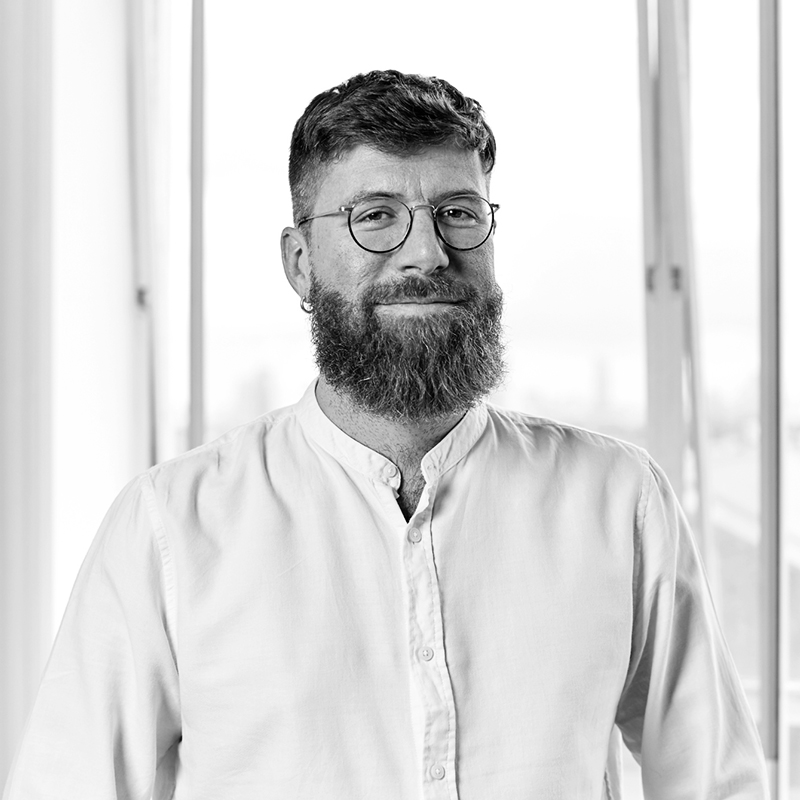
Riccardo is a typeface designer, trained between Politecnico di Milano and the University of Reading, UK. He lives in London, where he works as creative director at Dalton Maag type design studio. His research activity focuses on 20th century typefaces, their technical challenges and their role in the commercial printed matter of the time.
Presentation of the book "Fonderia Caratteri Nebiolo, 1878–1978. Nuovi studi critici" by Nebiolo History Project
The Nebiolo Society of Turin was Italy's most important typeface foundry. Between the 1930s and 1970s, its art studio - directed by Giulio Da Milano, Alessandro Butti, and Aldo Novarese - designed typefaces that marked the history of Italian graphic design and beyond. The dispersion of archives has made an initial critical assessment of the company's historical heritage difficult, and the international conference Fonderia Caratteri Nebiolo, 1878-1978. Nuovi studi critici held in Turin in September 2021 addressed this issue. The Nebiolo History Project (NHP)—composed of Alessandro Colizzi, Riccardo Olocco, James Clough, Riccardo De Franceschi, Marta Bernstein, and Massimo Gonzato—organized the conference and edited the recent publication of the proceedings. The published proceedings (Lazy Dog Press, 2023) finally make available a broad overview of the most up-to-date research on aspects of the historic Turin-based company that have been little investigated so far. Aimed at scholars, graphic designers, type designers, typographers, and typophiles in general, the volume Fonderia Fonti Nebiolo, 1878-1978. Nuovi studi critici is rich in images and well-documented evidence. It collects original language contributions from Italian and foreign speakers and is intended to give new impetus to historical research on Nebiolo.
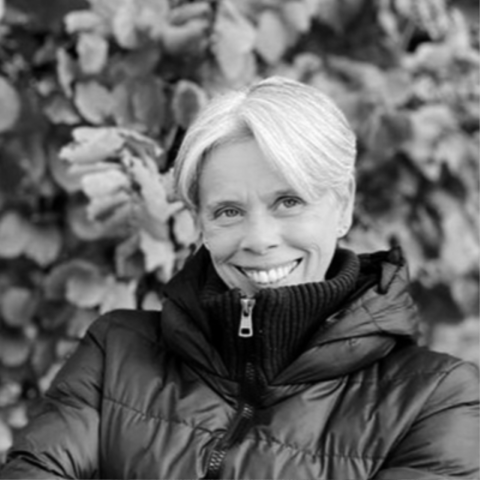
Giovanna Del Grande is a textile artist trained in fashion design. Her passion for contemporary art is expressed through fabrics. Textile fibres, threads, seams are transformed into Fiber Art works, which she creates and exhibits at international textile art exhibitions. An expert in the science, methods and poetics of narration, she is a member of the Trame Educative research group at Milano-Bicocca University, with which she participates in biographical narrative research and proposes textile art and participatory art activities.
The workshop, led by Daniele Delfino (the artist who was awarded the UNESCO partnership for the works Uomini Albero and the project L'Orchestra della Natura in 2018) and textile artist Giovanna Del Grande aims to provide a Participatory Art experience to become co-authors of a shared work. Warp and weft will form the core of the Uomo Albero (Tree Man) sculpture proposed by D. Delfino, where the uniqueness of each interpretation will be highlighted. In the creative process, textile scraps interwoven with plant material will join threads, words, and tree branches to create forms inspired by nature and reinterpret material destined for disposal. The magic of upcycling for a new Uomo Albero.

Daniele Delfino is an artist and a researcher of naturalistic expressions with a strong passion for prehistoric art and the cultures of "first world" peoples. He creates sculptures, sound installations, performances and music workshops to share with audiences of all ages using natural objects and materials. For many years he has been proposing his sound instruments to schools of all levels with the project L'Orchestra della Natura and creating site-specific works for contemporary art exhibitions and private venues. A member of the Trame educative research group at the Milano-Bicocca University, an expert in science, methods and poetics of narration, he received in 2018 the UNESCO partnership from the Unesco Ticino Bellinzona club for his projects Orchestra della Natura and Uomini Albero.
The workshop, led by Daniele Delfino (the artist who was awarded the UNESCO partnership for the works Uomini Albero and the project L'Orchestra della Natura in 2018) and textile artist Giovanna Del Grande aims to provide a Participatory Art experience to become co-authors of a shared work. Warp and weft will form the core of the Uomo Albero (Tree Man) sculpture proposed by D. Delfino, where the uniqueness of each interpretation will be highlighted. In the creative process, textile scraps interwoven with plant material will join threads, words, and tree branches to create forms inspired by nature and reinterpret material destined for disposal. The magic of upcycling for a new Uomo Albero.
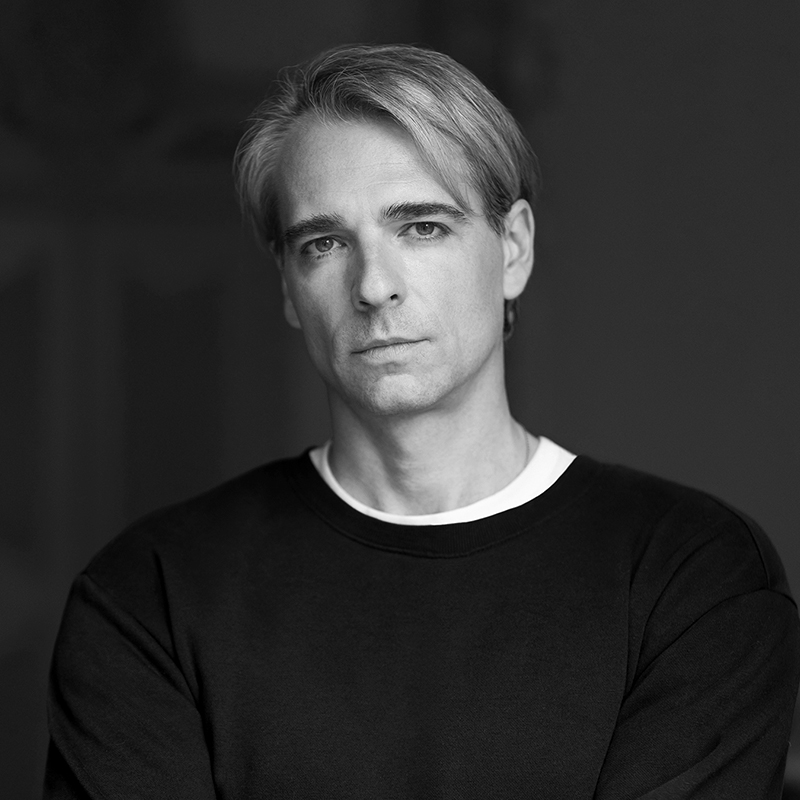
Tommaso Delmastro founded the Undesign agency with Michele Bortolami in 2003, where he works as creative director developing communication, branding and customised publishing projects for companies, institutions, publishers and foundations. Ferretti Yachts, Milano Design Week, Martini, Lavazza, Cipriani Food, Superga, Mattel, Gritti Palace, Ducati, Lonely Planet, Slow Food, Reggia di Venaria, Teatro Regio di Torino, Compagnia di San Paolo, Enel, Autostrade per l'Italia, Trenitalia, Stellantis, Philips, Salone Internazionale del Libro, Mondadori, Garzanti, Feltrinelli, DeAgostini and Il Sole 24 Ore are some of the clients for which he has developed communication projects with Undesign. He has collaborated and still collaborates with various schools and universities such as the Politecnico di Torino, the Istituto Europeo di Design di Torino, of which he was deputy director, the Nuova Accademia di Belle Arti di Milano, and the Università degli Studi di Perugia, as a lecturer for different courses and workshops. Awarded at the European Design Awards and the Stack Magazine Awards, selected for the XXIII Compasso d'Oro, he is featured with the works developed by Undesign in numerous exhibitions and publications that explore the themes of visual and communication design, in Italy and abroad.
Grafica Magazine: why we still need paper
Presentation of Grafica Magazine, a quarterly paper magazine focusing on graphic design and the disciplines revolving around the world of visual communication. The first issue will be released in September 2024.
The topic will be the future of newspapers and the independent publishing industry.
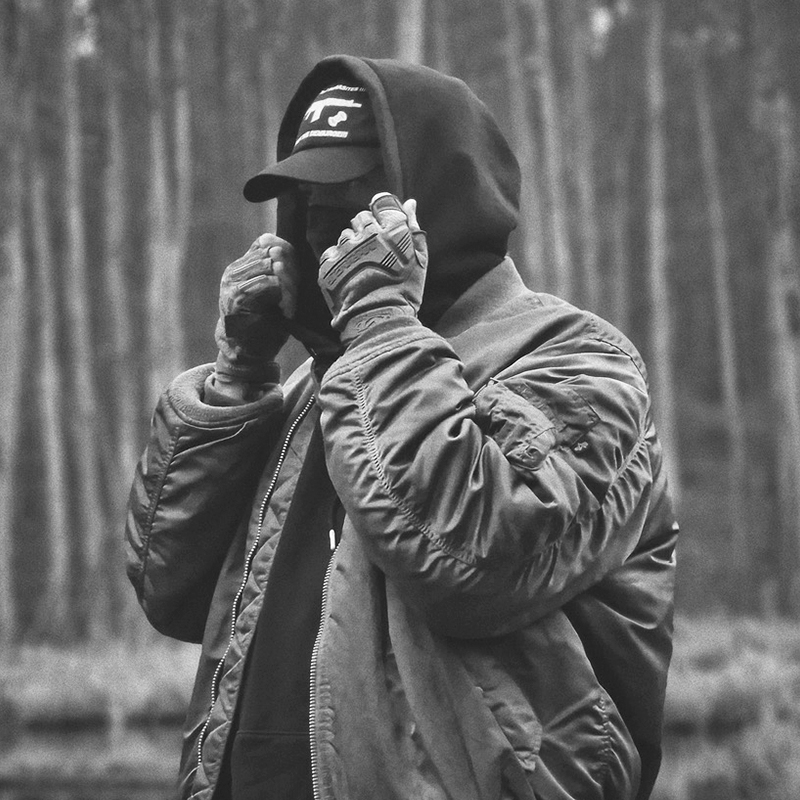
Ben Ditto is a creative director from London. Ditto’s projects span disciplines including film, creative coding, AI, robotics, print and live experience. His clients include Maison Margiela, Louis Vuitton, Dazed Beauty, Nike and The 1975. Ben’s utilisation of social media as a tool for reportage on topics ranging from military hardware to surgical procedures has gained him a cult online following.
Ben Ditto eludes the usual categories that define visual design professionals. At the same time he could own them all, —creative director, designer, stylist, artist, illustrator, publisher, documentary maker — yet it makes no sense to assign any of these labels to him. He is an experimenter, visionary, eclectic, an agent-provocateur. Looking at his work in the lineage of English designers fails to capture the context and complexity his work. More than Alan Fletcher or Peter Saville, we should think of Genesis P. Orridge or Frank Zappa. At this special appearance in Milan, he’ll discuss what he does, how he does it and perhaps reveal some mysteries about why he does it.

Giovanna Durì began working as an editorial graphic designer in 1979. In 1983 she joined Ferruccio Montanari's studio where she collaborated on projects for national magazines and cultural periodicals. In 1989, together with Laura Morandini, she founded the CDM studio, which initially also worked on advertising graphics. In 1994, he started an activity called "Lateral Works" with Lorenzo Mattotti from which many national and foreign exhibitions were created. Since 2000, she has been mainly involved in publishing and coordinated image for cultural events and curates exhibitions with illustration as a theme. Since spring 2012, she has been the author of books, as well as texts and illustrations for magazines and newspapers. Recently, she has also been teaching at the Accademia GB Tiepolo.
This talk, featuring three leading Italian graphic designers, will address Folon's influences on Italian graphic design since the 1970s and the poetics of his communication.
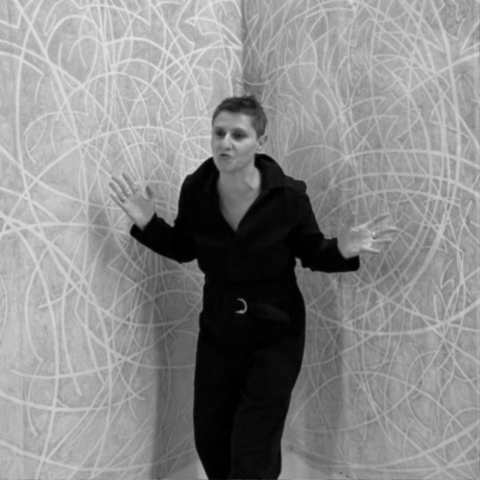
Anna Dusi was born in Milan, Italy, and has been involved in the art world since 1998. From 2007 to 2016 she was deputy curator of the Building Bridges Art Exchange in Los Angeles, an art organisation dedicated to building bridges between different cultures through international art exhibitions, artist exchanges and residency programmes. In 2015 she ventured out as an independent art curator consultant, working with established and emerging artists, creating collaborations with galleries, Foundations and museums between the US, Europe and Mexico. She currently lives and works in Mexico City.
Anthropology of a character. Present - future. Continuing to narrate the multifaceted world of Osvaldo Cavandoli
Moderator: Anna Dusi, Curator, with participation of Sergio Cavandoli, Eric Rittatore, blogger animation expert, Piero Tonin, Illustrator, cartoonist and animator and Andrijana Ružić, animation film historian.
Il Cava - Anthropology of a character
Starting from the importance of valorizing a reality comparable to that of an archive or a museum collection, I have reflected on how I would like to create a conversation carried forward by a unique character who embodies multiple creative forms: "Osvaldo Cavandoli". Deliberately setting aside the inevitable temptations of 'nostalgic suggestion', the purpose of this event is to explore Osvaldo's work, an inexhaustible resource and a stimulus for the new generations of image creators, a source of inspiration especially for his masterful invention of the character La Linea, a naive and irascible creature that has effectively become a figure of the collective imagination. The exhibition aims not only to recognize the life and history of one of the great "Artisans" of the Italian artistic and cultural tradition but also, and above all, to witness Osvaldo's transition from the careful and patient technical and stylistic arrangements of the Pupilandia experience to that perfect combination of picto-phonetic-kinetic energy that will embody one of the most iconic, universal, and popular characters in the global graphic universe: La Linea. The exhibition aims to be a journey of knowledge and reflection. Eminent historians and scholars of animation unanimously attribute to Osvaldo Cavandoli's work a crucial importance for the evolution of this particular language: among them, Professor Giannalberto Bendazzi, who was also a dear friend of the artist and a witness to some phases of his creative process, and who was among the first to highlight how the character of La Linea, in its modernity, subliminally referred to the very origins of Animation, including the love/hate relationship with the demiurgic Hand that gives it life. In addition to giving continuity to the knowledge of Osvaldo's work, I have had the opportunity to undertake a transformational research process on an interpretive process that will induce the viewer to observe another aspect of this story, namely La Linea che takes on a human form through a performative act. «I don't know what eternity is, if one can leave a lasting impression forever, but I know that works endure far beyond the abandonment of their creators. Honoring such works that have been 'orphaned' of their fathers is a way to prolong their lives through present and future generations. Osvaldo Cavandoli had an idea, which we can certainly define as brilliant in its apparent simplicity and in the universal ability to synthesize within itself something that we all feel intangibly, but struggle to see outside of ourselves in the concrete everyday». He managed to tell a story that we experience intimately within ourselves, in that place where there are no words - or perhaps, only the equally brilliant Grammelot of Carlo Bonomi, the only possible voice of La Linea - but intertwined emotions.
The exhibition will be open until June 13.
La Linea Performative Act
Created by Anna Dusi. Composer Camilo Angeles. Co-writer Sofia Palermo with the creative collaboration of Monica Dusi and Sofia Casprini, performer and choreographer of La Linea.
La Linea will take human form through a theatrical act, a work that is experienced and grasped in its complexity as well as its completeness. The spectator will have the opportunity to immerse himself in the permeable, traversable language of La Linea within the design museum.
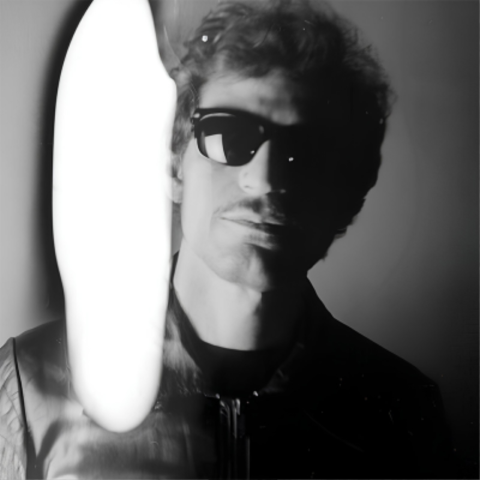
Andrea Fabrizii is a film scholar and music researcher, musician and co-author of the radio program Dannata Balera. Music consultant and Sound Editor for Cam Sugar record label, he has been involved in various cultural projects within the framework of major events in the sector, through concerts, screenings, guided listening, critical interventions, readings and event management. He has written several articles related to the world of music for cinema, and some contributions for monographic publications on musicians or films (Piero Umiliani, Piero Piccioni, Franco Micalizzi, Jazz from Italy, Adua e le compagne, La vita agra). Organiser of the four editions of the festival Appuntamento a Mano Armata dedicated to Italian noir film. A tireless researcher of forgotten and buried sounds, an 'archaeologist' of magnetic tape and vinyl, he is also a veteran of DJing (he started spinning records in the 1990s of the lounge movement), a music events and film festivals organiser, and a vinyl collector with very eclectic tastes (from soundtracks and jazz to Euro-beat, funk, disco and garage punk).
Library Music: a journey into dark and unknown music
"Library Music" refers to all the albums specially created for TV and the radio to synchronize and comment on documentaries, advertising, and other programs. Library Music includes all kinds of genres, from jazz to the most extreme funk, often composed by high-scale musicians under pseudonyms, an ideal terrain for unleashing the most incredible and free experimentations. Since they were not on the market, the original vinyl records from the 1970s and 1980s are now rare objects valued by collectors, reprinted and listened to by new generations. Luca Barcellona and Andrea Fabrizii, fond connoisseurs of the genre, take us to the discovery of the beautiful world of library music, which is also the main topic of the exhibition dedicated to the album covers. They will disclose the secrets and backstage of this hidden and fascinating world, following a DJ set of the best recordings from their collections. An unmissable event!
Dj Set by Luca Barcellona and Andrea Fabrizii following the talk Library Music: a journey into dark and unknown music.
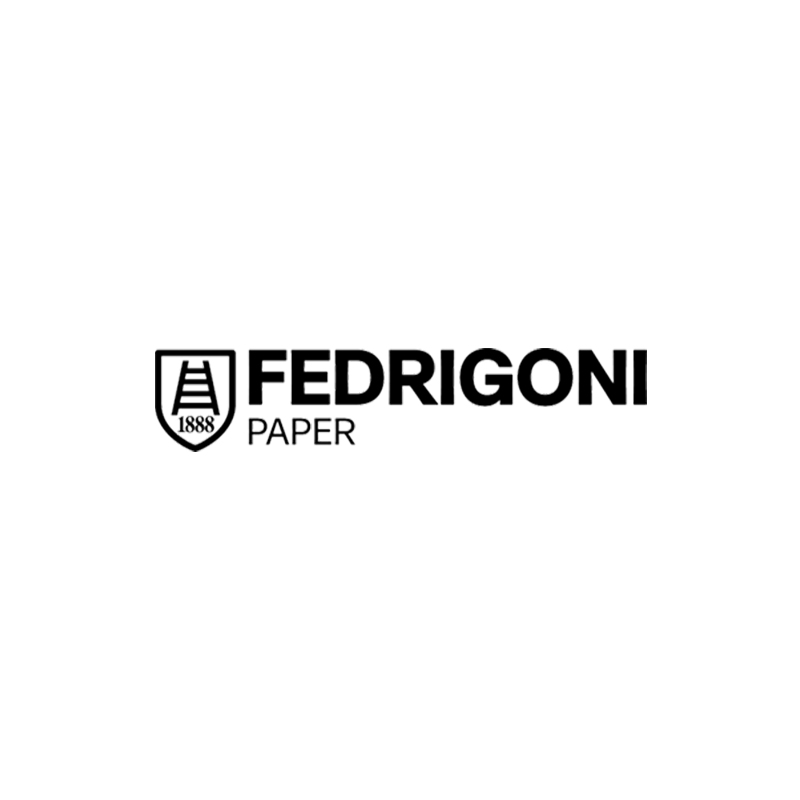
Combining excellent performance, aesthetics and sustainability with special papers for packaging and communication, creative applications and prestige publishing. All this is Fedrigoni Special Papers.
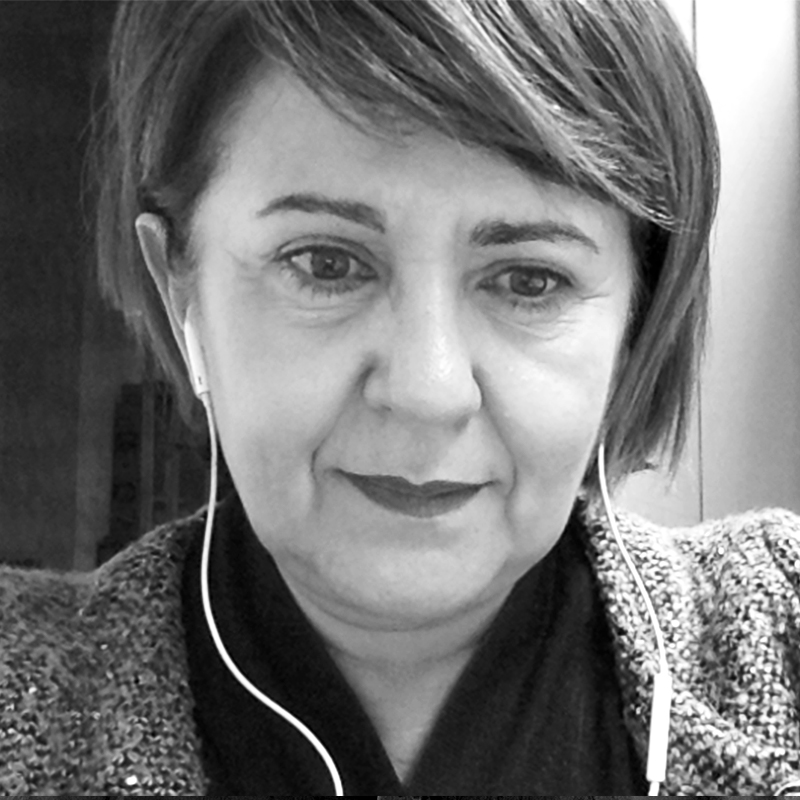
Associate professor at the Department of Architecture, Università di Palermo, she deals with visual communication design. Vice-coordinator of the cdlm in Design e Cultura per il Territorio. Aiap President (2015-18) and Vice President (2009-15). Design Ambassador in the world for Italian Design Day in 2017. She is author of books and essays. She is a member of editorial boards, observatories and European projects.
Communication Design: a discussion about research
Valeria Bucchetti, Cinzia Ferrara, Carlo Martino, and Paolo Tamborrini, representatives of the research team “Design della comunicazione” of SID (Società Italiana di Design), dialogue with young researchers on the forms of experimentation that the university promotes to support the discipline's evolution.

Luca Ferreccio graduated at SPD Scuola Politecnica di Design in Milan. Senior Lecturer at NABA, Nuova Accademia di Belle Arti, with the courses: Metodologia della Progettazione (design methodology), Packaging Design, Brand Design and Brand Strategy. To this, he accompanied his professional activity, firstly in agencies and design studios, including some of the largest and most established in Europe. Today he runs the branding studio SoFarSoNear.
Fragile Signals
One of the main reasons for the lack of accessibility in the current directional signage systems is the use of a mainstream model based on average users, the lack of communication in the design of public spaces and “non-places”. Starting from the cultural genesis of social exclusion practices, this talk addresses the need to change the standard for designing inclusive directional signage/wayfinding systems. Curated by the Communication and Graphic Design Area of NABA, Nuova Accademia di Belle Arti.
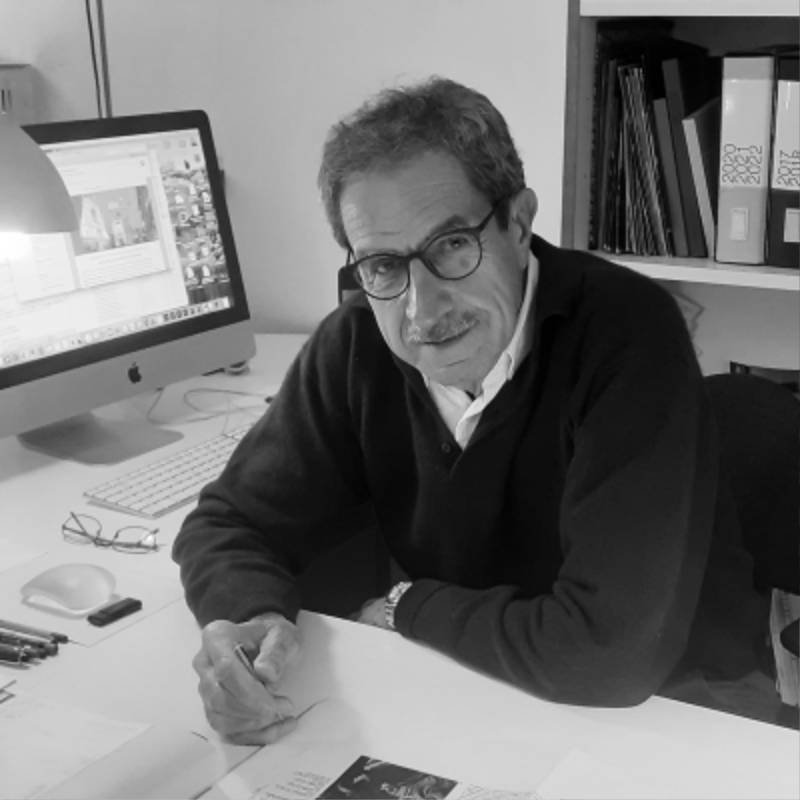
Emilio Fioravanti was born in Milan in 1945. After completing a graphic design course at the Umanitaria with Max Huber, Albe Steiner, Massimo Vignelli, Giancarlo Iliprandi, Hainz Waibl and Michele Provinciali, Emilio Fioravanti began his professional career at Massimo Vignelli's studio and later at Unimark International, run by Massimo Vignelli and Bob Noorda, an experience that ended in 1968. In 1969 he founded G&R Associati with Davide Bolzonella, Giorgio Fioravanti, Giovanni Galli and Luciano Lorenzi. Within this group, Emilio Fioravanti was mainly involved in public graphics, taking care of the image and communication of theatres, museums, exhibitions, cultural events and publishing. In 1968, Paolo Grassi commissioned him the design of the image of Piccolo Teatro, a work that would accompany Emilio Fioravanti's professional life for a long time and end in 2021, after 53 years. The collaboration with Teatro alla Scala in Milan began in 1972 and will continue for 50 years, ending in 2022. He is responsible for the coordinated image and the realisation of all printed matter and exhibitions promoted by the Theatre. In particular, the entire G&R group is involved in the design and graphics of the exhibition Duecento anni alla Scala at Palazzo Reale in Milan. For the Comune di Milano, he is responsible for the graphics of numerous exhibitions, designing the logo of Palazzo Reale and the graphics of posters for cycles of events and summer shows (Milano Estate) and cycles of concerts in museums (Serate al Museo). Other important collaborations include those for the Società del Quartetto from 1994 to 2016 (with the coordinated image of the Settimane Bach concerts), Milano Musica from 2000 to 2014, and the Museo di Diocesano di Milano from 1997 to 2013. Major clients in the private sector include Artemide, Arflex, Olivari, Fontana Arte, IBM, Letraset, I Viaggi del Ventaglio, Techint, Gruppo Humanitas. After the company ceased trading at the end of 2022, he opened the Emilio Fioravanti studio, in continuation of his previous work.
Presentation of the book "50 anni di progetti grafici a Milano" by Emilio Fioravanti
The book presents, in 264 pages, the graphic projects realised from 1968 to 2023 for the Piccolo Teatro and La Scala, major exhibitions at Palazzo Reale, cultural events, museums, furniture companies and important companies in the private sector. The result is a visual testimony, through communication tools, of a very important period for the city's cultural activities: the second half of the last century up to the first decades of the 2000s.
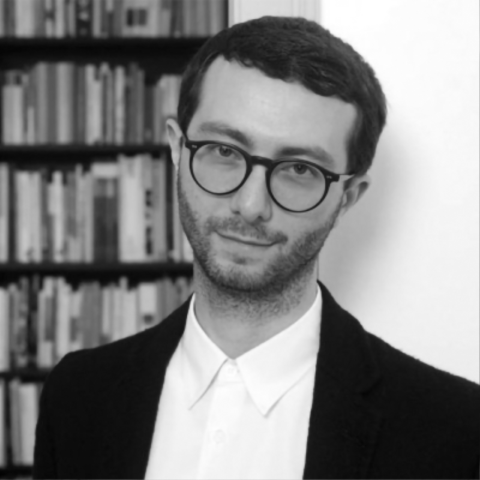
Davide Fornari is a full professor at ECAL/University of Art and Design Lausanne (HES-SO), where he is leading the Research and Development department since 2016. He teaches at SUPSI University in Mendrisio and at the Design Academy of Eindhoven. He is a member of the Federal design commission of the Swiss Federal office of Culture. Among his publications: Mapping Graphic Design History in Switzerland (Triest verlag, Zurich 2016), Carlo Scarpa. Casa Zentner a Zurigo: una villa italiana in Svizzera (Electa, Milan 2020), Swiss Graphic Design Histories (Scheidegger & Spiess, Zurich 2021), Olivetti Identities. Spaces and Languages 1933–1983 (Triest verlag, Zurich 2022).
Hotpot is a project by Parco Gallery: a bi-monthly publication on graphic design research, theory and history. Every two months, a new article by international personalities from the world of design is shared via newsletter and then made available online for free. The first two contributors are Davide Fornari, who explores the link between the Swiss and Italian graphic design traditions, and Vera Sacchetti, whose reflections focus on the role of women in design throughout history.
To the sources: tools for designing and studying graphic design
The meeting develops into three connected moments intended to share, especially with young professionals and students, a research and project methodology that has graphic documents and documentary sources as its starting points.
The meeting takes place and starts from the collections of the Civica Raccolta di Stampe A. Bertarelli to then present recent publications, research, and exhibitions that address the issue of sources through different methods and perspectives: the series “Antologia di cultura grafica” by Lazy Dog Press, the project The Sources of Jan Tschichold’s “the New Typography” by ECAL, and IDA Investigating Digital Archives, a project by ISIA Urbino on documentary sources for visual communication available on the Web.

Federica Fragapane is an independent information designer specializing in creating projects and data visualizations as a freelancer. Over the years, she has designed data visualizations for Google, the United Nations, WHO, the Publications Office of the European Union, BBC Science Focus, and Atmos, and she collaborates periodically with La Lettura - Corriere della Sera. Many of her projects take an experimental approach, carefully selecting visual languages to encourage readers to engage with the narratives conveyed by the data. In 2023, the Museum of Modern Art (MoMA) in New York acquired three of her data visualizations, making them part of its Permanent Collection.
Alive and political - words of data visualization
The talk describes the design process and the reasons behind data visualization projects with different scopes and features. It focuses on the visual languages used to shape information and stories, considering how visual words used in data visualization can be alive and, in some cases, political.
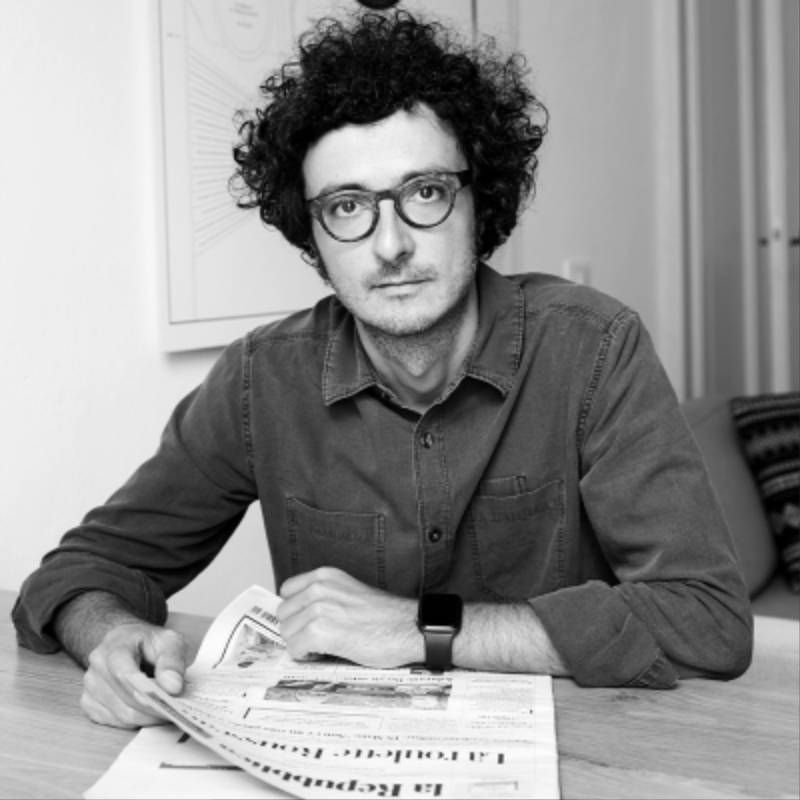
Francesco Franchi is a journalist and the deputy creative director of La Repubblica. He earned his degree from the Polytechnic University of Milan with a thesis on graphic journalism in daily newspapers, an academic project which turned out to be, over the years, the starting point for a remarkable professional career. He started his career at LeftLoft, during the years in which infographics were becoming more popular in Italy. In 2008 he joined Il Sole 24 Ore as the Creative Director of IL. Intelligent Lifestyle, a magazine that won many international rewards for its innovative design. As of 2016 he has been a member of the editorial staff of La Repubblica, which he redesigned twice in three years. He is a member of AGI and is the author of several books, including Designing News and The Intelligent Lifestyle Magazine.
Grafica Magazine: why we still need paper
Presentation of Grafica Magazine, a quarterly paper magazine focusing on graphic design and the disciplines revolving around the world of visual communication. The first issue will be released in September 2024.
The topic will be the future of newspapers and the independent publishing industry.

Following his BA thesis on tactile typefaces at the ISIA in Urbino, and an MA in Typeface Design at the University of Reading, he teaches typeface design and typography at the Pxl-Mad School of Arts in Hasselt, Belgium. He’s also a PhD candidate at ReadSearch, a research lab at the University of Hasselt, studying parametric typeface design for legibility. He’s been collaborating with the Foundry since 2018.
Fontstand, in collaboration with BIG, brings an extension of its International Typography Conference series to Milan.
Five speakers from renowned Italian type foundries and members of Fontstand will share the stage for this three-hour program of talks on type and typography. Hosted by Silvana Amato, President of AGI Italia, the conference will feature presentations by Beatrice D'Agostino, Matteo Bologna (muccaTypo), Cosimo Lorenzo Pancini (Zetafonts), Andrea Amato (CAST), and Giulio Galli (CAST), with a short introduction by Fontstand partner Andrej Krátky.
Anything to declare, then, about AI and typography without sensationalism?
The talk is a report on what is going on in a research lab in Hasselt (Belgium) concerning Generative AI and fonts. How the parties involved communicate: type designers, data scientists, AI specialists and theorists;
the explored technologies, the projects for future developments, and the thoughts about this phenomenon in general. And, in particular, the viewpoint of a type designer who tends to loathe sensationalism.
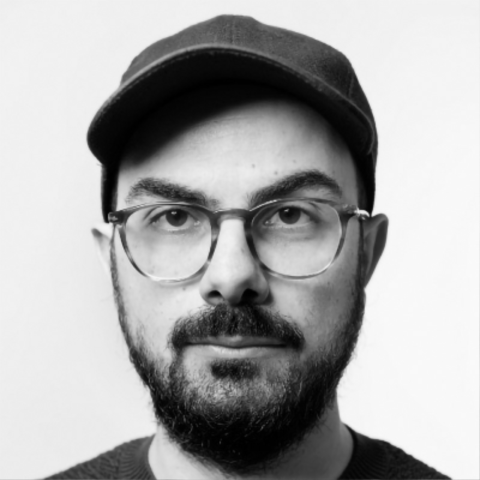
Michele Galluzzo, graphic designer, PhD in Design Science, has been a researcher at the Faculty of Design and Art of the Free University of Bolzano (2020-23) and is currently a professor at the Università Iuav di Venezia. He was a research assistant and graphic designer at the Archivio storico del Progetto grafico AIAP in Milan (2014-17) and a member of the editorial board of the international graphic design journal Progetto Grafico (2018-22). As a researcher he has collaborated with several historical archives, including Fondazione Pirelli, Gruppo Campari, Associazione Archivio Storico Olivetti. He has been curating since autumn 2019 the @logo_irl project, investigating the social history of logos, and he co-founded in 2020 - with Franziska Weitgruber - the design/research duo Fantasia Type.
People’s graphic design? - Conversation about the social and public history of graphic design
How do we trace and bring out the voices of users and consumers in the history of graphic design? What artifacts, narratives, and memories come to light when historical design reconstruction becomes public or social? In recent decades, thanks in part to the possibilities offered by digitalization and the Web, there has been growing attention on more inclusive historical approaches, participatory archival practices, and dissemination platforms capable of reaching a wider audience. In this conversation, sponsored by AIS/Design for the cycle Dentro le storie del design, Michele Galluzzo and Carlo Vinti, historians of graphic design, talk about the risks and opportunities of these new perspectives, presenting and discussing some previous experiences.
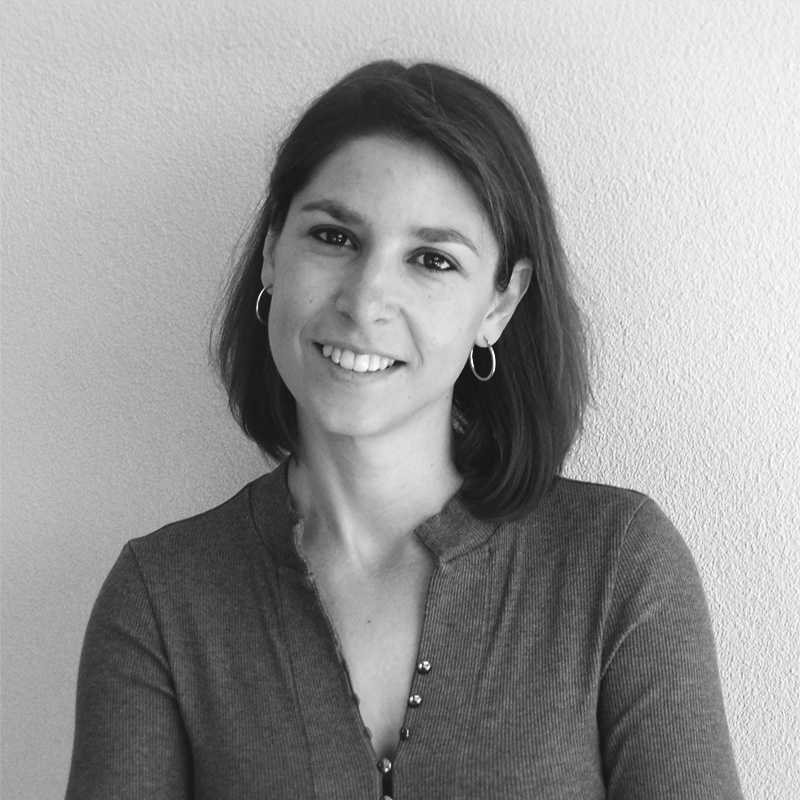
Silvia Gasparotto, PhD, is an associate professor at the University of the Republic of San Marino and Vice Director of the master’s degree in Interaction & Experience Design. She is the author of many publications and carries out research in the fields of Design for Cultural Heritage, Interaction Design, Design Theory and Collaborative Practices.
D/STANZE - Forms, relations, approximations
The exhibition aims to investigate the theme of distance: a fluid and dynamic concept that takes shape in multiple forms, relationships, and approximations.
Empathy, social relationships, hyper-connection, and microscopic or macroscopic views are just some of the declinations that Unirsm Design visual communication teachers and students have been working on, questioning the nature of interpersonal and interspecies relationships.
In a dialogue between the visual artifact and the viewer, there opens a universe of reflections and questions about contemporary society and its ability to truly connect beyond the distances that separate us.
The exhibition will also be complemented by a contribution by Alessandro Bergonzoni, the extraordinary actor and artist, entitled: Per stare e non distare (vite da vicino di cose).
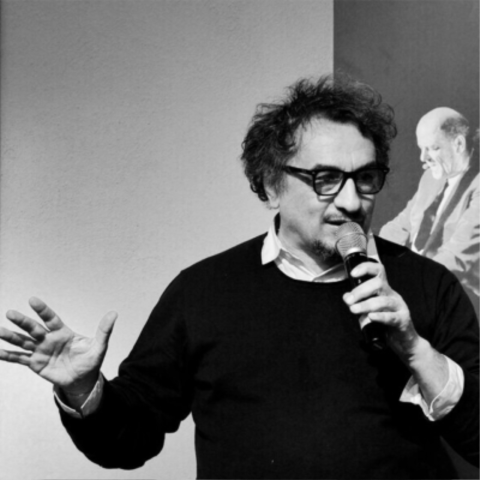
Moreno Gentili is a writer, communication consultant and has been, until 2007, a photographer. His books include In Linea d'Aria (Feltrinelli), La Ferrari (Skira), Illibertà - Tempo che non ti aspetti (Excogita), Viaggi di memoria (Bompiani - RCS Educational), Rivedute Veneziane (Idea Books) Habitat (Art&), NYC, New York Revisited (Charta), Sguardo Nomade (Archinto), L'Inferno dentro (Sonda), On the move: Autogrill oggi (Skira), Suite Sarajevo (Archivi del '900), African Heroes (Skira), Milano 1944, un amore (Skira), Cento anni di futuro: la storia dei Guzzini (Skira), Billy since Zurigo (Skira), Terra arsa Tempo dovuto (La vita felice), No, (E. Pulcinoelefante) and others. Among his projects are: the redesign of the Museo Fratelli Guzzini in Recanati; the redesign of Branca Museum in Milan; the Harmonia Mundi project, a permanent exhibition at the Rcs headquarters in Milan; the design of Autogrill with Al Gore, Steven Spielberg, Marc Augé and other authors to tell the story and successes of the company; the film The Italian TCI on the 110-year history of the Italian Touring Club; the film Search me on the occasion of the opening of the Ivrea Multifunctional Centre of Bracco Industries and the new Bracco is Culture, the documentaries about Fashion, Design and Technology of the programme Blù for Telepiù; the Vulcania project, a permanent installation of the new Centro Stile-Fiat in Turin; Brembo with works by B. Fässler, B. Ginammi, I. Bochicchio, M. Airó, S. Codignola, M. Mulas, M. Migliora.
Thursday 23 | 15.00 — 20.00
Friday 24 | 10.00 — 20.00
Saturday 25 | 14.00 — 20.00
Sunday 26 | 10.00 — 18.00
Manifesti Poetici (Poetic posters) are a model of shared communication that the author, Moreno Gentili, invented more than two decades ago and that, over time, developed into an organic series of germinative works in continuous becoming, starting from that first unique gesture/action of making the word a form; a concatenation of words and short phrases, ringed in a single hyperbolic anaphora starting from a generating code, such as: «Ti amo», «Bevo vivere», or from an imperative: «Piantala», «Semina», «Servila», but also from adverbs of affirmation, such as: «sì», «no», repeated 365 times.
If artwork is a synthesis, this project is a path of research and maturation that houses and provokes change in creative modes and their implementation. Poetic posters are a work/project that lives on the encounters with people who discover the project itself, buy the poster, and continue the dialogue with the artist and his words.
The Manifesti Poetici have been exhibited over the years in various places in the city, from Café Cucchi to Teatro Franco Parenti. These are public spaces of sharing and exchange that align with the author's beloved formula of art as civil emotion, outside of any institutional path and close to people's lives."

Beppe Giacobbe is an illustrator. He collaborates regularly with Corriere della Sera and other periodicals. He draws pictures and covers for Italian and international publishers. Born in Milan in 1953, he started drawing from an early age and painted by getting his fingers dirty with colors from his father's palette. Around the age of 10, he made some copies of Morandi and Cezanne, at the same time studying piano. During his high school years, he played in a rock band, playing until late at night on trips far from Milan, but too many absences and poor results cost him a failing grade and a 'forced job' in his father's fabric shop. Then came the happy period at the Accademia di Brera and three summers at the School of Visual Arts of New York, absorbing the moods and atmospheres of the Big Apple. With the birth of his son Marco, he began illustrating children's books for French and American publishers, collecting several awards. Teaching is for Beppe Giacobbe an important moment of exchange with young people from whom he says he has learnt a lot in his 24 years of teaching, first at the IED in Milan and then at the ISIA in Urbino.

Grafiche Milani is a historic company founded in Milan back in 1906. Its roots are associated with the quality of Made In Italy. With its international offices in Paris and New York, it is the industrial partner of the most prestigious design and fashion publishing groups.
Bob Noorda (Amsterdam 1927-Milan 2010) settled in Milan in the early 1950s to begin a career that would take him to the top of world design. It was in this city that the young Noorda approached the big companies active in the post-war period and began to forge relationships with the major Milanese personalities in industry, publishing and academia. In the early 1960s he shared a studio with Massimo Vignelli and later headed the Milan office of Unimark International. In Milan he married and started a family as well as running his own studio until 2010. Bob Noorda considered himself a Milanese doc even though he was a Dutch citizen, and he dedicated major projects to Milan that are still there for all to see today, such as line 1 of the metro, the Mondadori and Feltrinelli brand and the Desio bank brand.
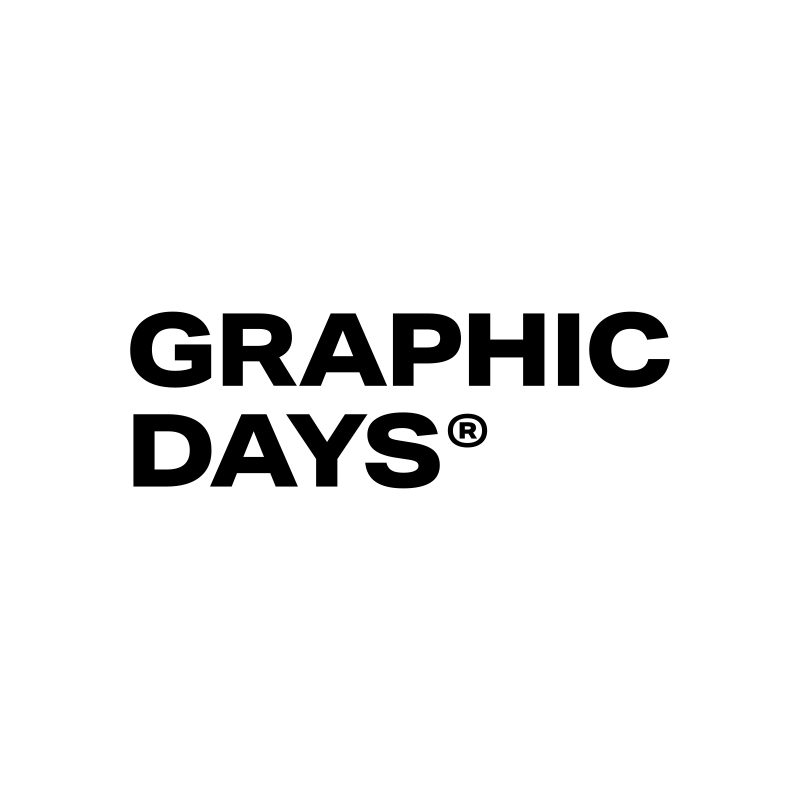
Graphic Days® is an innovative cultural center that curates and implements cultural projects with social repercussions: it deals with visual and social design. Graphic Days® is an international annual festival of scientific dissemination, experimentation and research and an observatory on visual and social design thanks to the collaboration with a network of international and local actors. Graphic Days® is a space for cultural dissemination through the curation and promotion of projects, exhibitions and artistic residencies. Graphic Days® is a design lab, a laboratory for projects that, through social design, develop actions on the territory with social repercussions (from urban regeneration to initiatives of active citizenship). "We mix design and people" is the claim: thanks to its ability to communicate in a visual and immediate way, visual design reduces the distance between a message and its recipient, it conveys information and stimulates debate with the aim of making the beneficiaries active and oriented towards change. For us visual design is the tool to create an encounter between people, providing them with new ways of interpreting and using social innovation projects through a design oriented multidisciplinary approach.
Neologia is a project curated by Graphic Days® that promotes a network of young talents in the landscape of Italian visual communication. Designers and visual designers between 18 and 30 are invited to present their most representative, innovative, experimental project, characterized by the contamination of styles and languages, to create a dynamic observatory for quality and innovation in the visual world.
The observatory is structured in three categories: Motion Graphic – GIF, Poster Design, and Editorial Design. In the 2024 edition, the AI category was added. Poster design and motion graphic projects can be realized using artificial intelligence and presented in the dedicated section.
On Thursday 23rd the exhibitions in Milano Certosa District will be open from 13.30 to 18.00
Neologia - presentation of the winning projects Presentation of the winning projects of the Neologia exhibition.
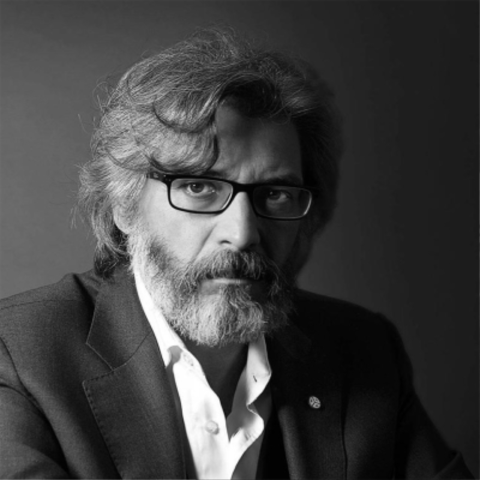
Gaetano Grizzanti, designer and lecturer, lives and works in Milan. He founded Univisual in 1986, a design studio specialised in trademark and identity system design, obtaining several international awards and recognitions. Former member of the National Board of Aiap and expert for Court of Milan in Trademark matters. Author of the book Brand Identikit - Transforming a Brand into a Brand. Founder of the Associazione Campo Grafico, namesake of the historic magazine, to preserve its cultural and documentary memory.
Corporate Identity - Visual design between project culture and business culture
The event includes a talk and a selection of projects on display by Italian studios/designers. It is exclusively dedicated to visual identity for the industry and service business world.
The objective is twofold: on the one hand, to illustrate the virtuous relationship that is possible between design culture and the client's needs, and on the other hand, to bear witness to contemporary Italian work from the golden age of our past — between the 1950s and 1990s—which essentially formed the tradition of graphic design in our Country, that is historically recognized throughout the world.
The exhibition will be open until June 13.
This Roundtable aims to reintroduce a topic in recent years no longer on the agenda in the design culture debate.
What is the state of the art of visual design in corporate identity today? While the coordinated image since its early days has been representative of much of the Italian graphic design tradition, the scenario of the 2000s with its epochal and technological changes seems to have forgotten the crucial importance of its role in the economy and society.
Speakers will be:
Mario Piazza
Graphic Design Historian
Lecturer at the Politecnico di Milano Department of Design
Anna Carmassi
STEAMiamoci Project Leader
Confindustria National Technical Table
Carlo Branzaglia
Design Writer
Ambassador IED Postgraduate Milan
Vania Mattiola
Intellectual Property Lawyer
Antonio Zacchera
Vice president
Associazione Marchi Storici d'Italia
Moderator:
Gaetano Grizzanti
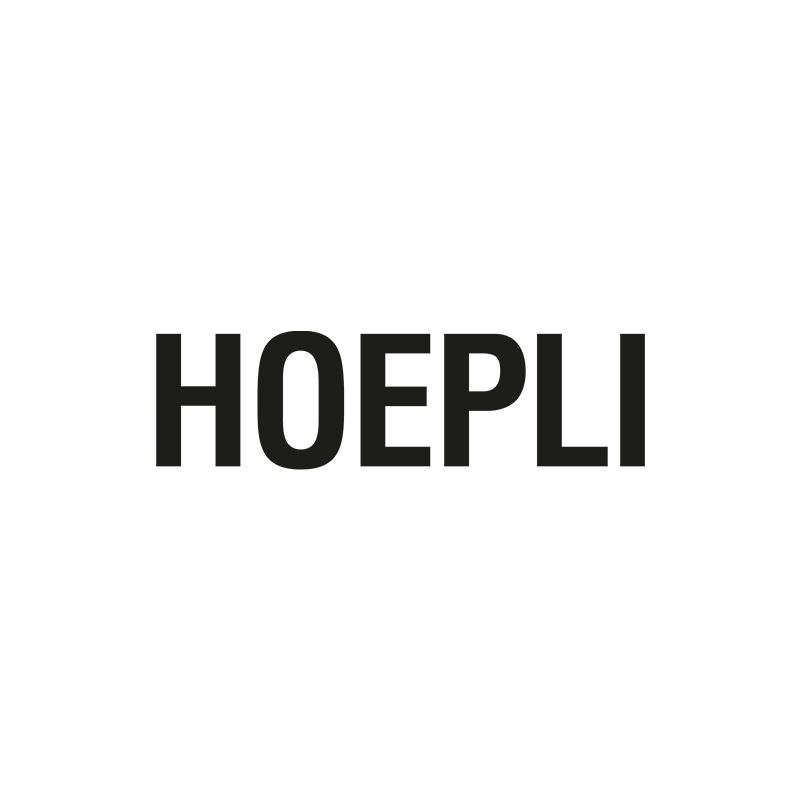
In Milan since 1870, the Casa Editrice Libraria Ulrico Hoepli still accompanies with its volumes the training of professionals in various areas, including architecture and design. The Libreria Hoepli, located in the iconic building designed by Figini and Pollini, is a landmark for the city and is characterised by its wide availability of volumes, in foreign languages as well.
Graphic design: a dialogue between image and text
A lectio sponsored by Hoepli on the occasion of Biennale Internazionale Grafica.
Through a selection of projects and workshops, the founders of studio òbelo, Claude Marzotto and Maia Sambonet, explore the different forms of relationship between images and words in the weaving of a visual discourse that holds together heterogeneous places and times - starting from the book but also talking about exhibitions, exhibition spaces, and workshops. òbelo is a graphic design studio active in publishing, cultural communication, and education.

IGPDecaux launches their second edition of the IGPDecaux Graphic Award, a contest dedicated to creatives who are challenged to create a multimedia graphic design that interprets the theme, in line with the company's mission, "Sustainable living spaces for the city and its citizens - climate action edition." The three winning works will receive a cash prize and will be displayed for one year on Out Of Home communication spaces throughout Italy.
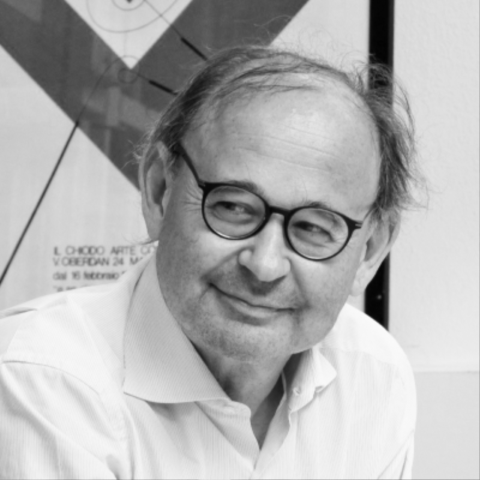
Andrea Kerbaker was born in Milan in 1960. Author of fiction and non-fiction books, he runs the Kasa and Kapannone dei Libri where he keeps his collection of over 35,000 volumes. He collaborates with the Italian newspaper Corriere della Sera and the Sunday supplement of Sole/24 Ore.
Based on his more than twenty-year-long friendship with Giorgio Lucini, one of the masters of twentieth-century typography, Andrea Kerbaker is organizing at Kasa Dei Libri an anthological exhibition of many of his works, always characterized by the highest quality combined with a healthy desire to capture the ironic and joyful aspects of life.
The exhibition will open on May 15 and will continue to June 2.
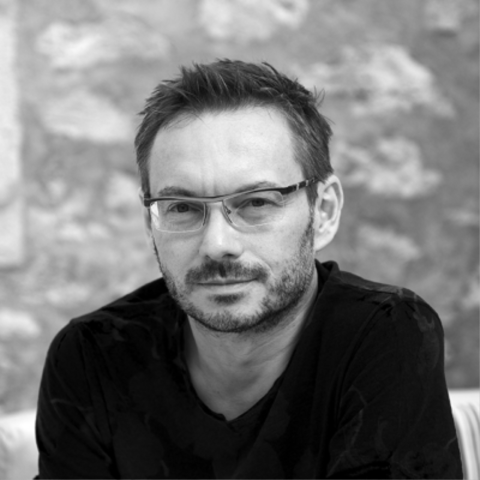
Andrej Krátky is a Slovak type designer from Bratislava and co-founder of Fontstand – a font discovery and streaming service. He studied in the Czech Republic and the USA and graduated from the Type & Typography Studio at UMPRUM in Prague. As a creative director, he has led successful advertising campaigns for local and international clients. He designed the typefaces Bradlo, Nara and Nara Sans.
Fontstand, in collaboration with BIG, brings an extension of its International Typography Conference series to Milan.
Five speakers from renowned Italian type foundries and members of Fontstand will share the stage for this three-hour program of talks on type and typography. Hosted by Silvana Amato, President of AGI Italia, the conference will feature presentations by Beatrice D'Agostino, Matteo Bologna (muccaTypo), Cosimo Lorenzo Pancini (Zetafonts), Andrea Amato (CAST), and Giulio Galli (CAST), with a short introduction by Fontstand partner Andrej Krátky.
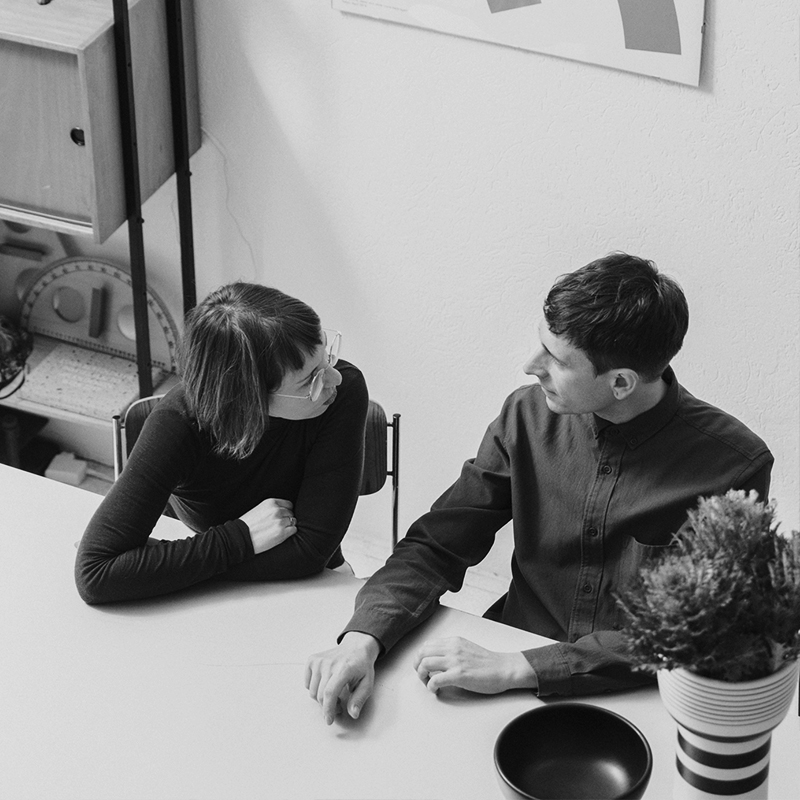
LaTigre is a graphic design studio founded and directed by Luisa Milani and Walter Molteni, an internationally recognised creative duo and AGI member. Since 2009, the studio has been constantly and tirelessly searching for multiform and kaleidoscopic visual languages. Their formal research is permeated by synthesis and a vibrant use of colour, the boundary between abstract and figurative becomes at times indefinable. In recent years the studio has collaborated on an ongoing basis with Abitare, Apple, Bitossi Home, Bulgari, Living - Corriere della Sera, MaxMara, New York Times, Wired USA, and many others.
A textbook for eternal youth
Scattered stories from the genesis to the survival of a contemporary graphic design studio.
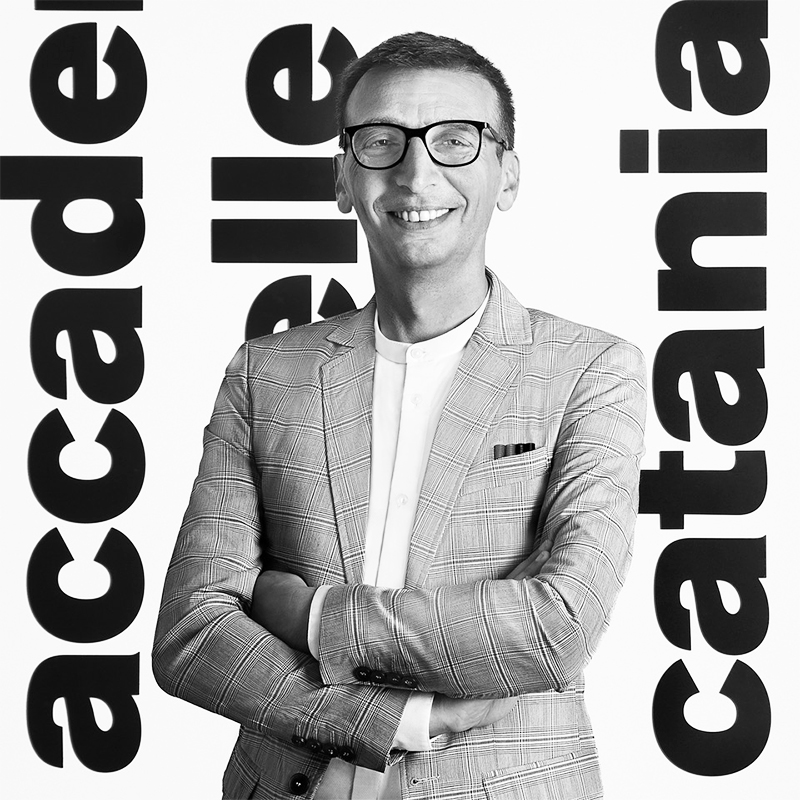
Gianni Latino (Syracuse, 1976) is a graphic designer, teacher and author. He is one of the most established names on the Italian graphic design scene. Since 2000, he has been working on visual identity for public and private entities, cultural communication, book design and curating public exhibitions. He is professor of Graphic Design at the Accademia di Belle Arti in Catania, where he serves as headmaster. He is a member of the Consiglio nazionale per l'alta formazione artistica e musicale (Cnam). Author and editor of 13 books, his debut was Graphic design. Guida alla progettazione grafica(LetteraVentidue, 2011). In 2016, he was selected among the 24 most established and influential Italian graphic designers for the exhibition Signs. Contemporary Italian Graphics. In December 2022 he gave a TED talk in the TEDxVittoria format with the talk The courage to design for the community.
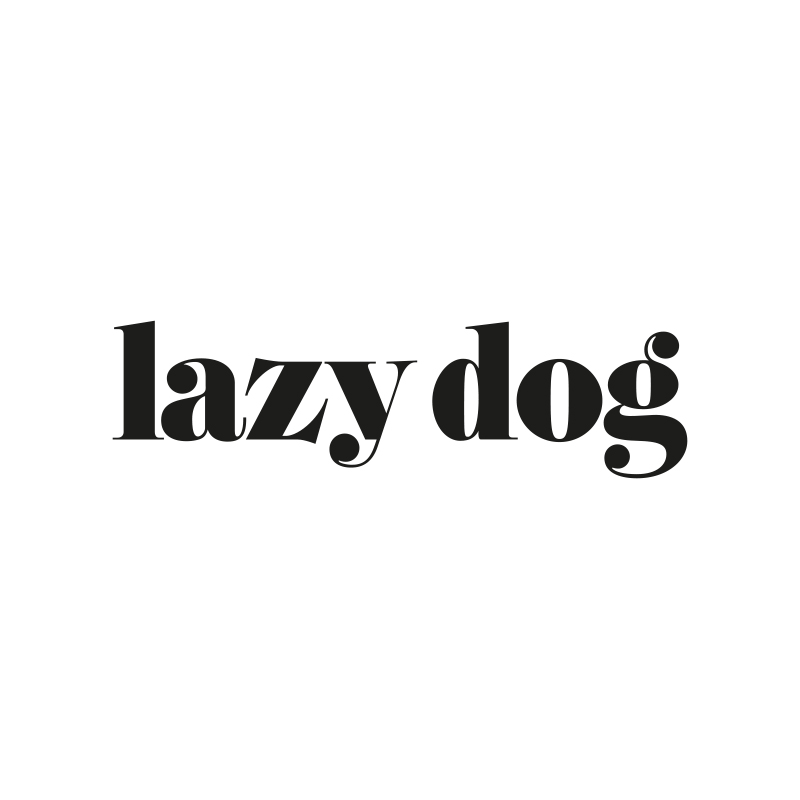
Lazy Dog Press is an independent publishing house, founded in 2012 in Milan. The name comes from the famous pangram: «The quick brown fox jumps over the lazy dog», a sentence containing the entire alphabet. Their catalogue is dedicated to visual culture, with texts on calligraphy, illustration, photography, architecture, typography and design, as well as essays on the same topics. The books are designed and produced with sartorial care and particular attention to the choice of materials, content, production and, above all, graphic style. Published authors include Aoi Huber Kono, Beppe Giacobbe, Bob Noorda, Cesare Leonardi, Franca Stagi, Charles H. Traub, Elisa Talentino, Francesco Dondina, Franco Fontana, Franco Matticchio, Guido Scarabottolo, Luca Barcellona, Gus Powell, Gusmano Cesaretti, James Clough, Jost Hochuli, Katsumi Komagata, Lorenzo Mattotti, Olimpia Zagnoli, Pino Tovaglia and Riccardo Olocco.
Lazy Dog Press is an independent publisher born in Milan in 2012. The name comes from the famous pangram: «The quick brown fox jumps over the lazy dog», a complete sentence that contains the entire alphabet. The catalog is dedicated to visual culture, with text in calligraphy, illustration, photography, architecture, typography, and design, in addition to essays on the same topics. The books are designed and realized with tailor-like attention and careful choice of materials, contents, production, and graphic style. Among the published authors we find names such as Aoi Huber Kono, Beppe Giacobbe, Bob Noorda, Cesare Leonardi, Franca Stagi, Charles H. Traub, Elisa Talentino, Francesco Dondina, Franco Fontana, Franco Matticchio, Guido Scarabottolo, Luca Barcellona, Gus Powell, Gusmano Cesaretti, James Clough, Jost Hochuli, Katsumi Komagata, Lorenzo Mattotti, Olimpia Zagnoli, Pino Tovaglia and Riccardo Olocco.
On Thursday 23rd the exhibitions in Milano Certosa District will be open from 13.30 to 18.00

Paola Lenarduzzi is a graphic designer. Curator of Segnature, a micro-magazine circulated by voice and distributed by hand. She is among the founders and art director of Doppiozero. She designs books for the Johan and Levi publishing house and for the Rovati Foundation Museum. He collaborates with Collezione Maramotti, Quodlibet, Corraini and Acquario. He teaches Editorial Design and Typography at Naba in Milan. His studio is studiopaola based in Milan.
Logistics of ideas
Design and evolution of Signature magazine, verbally circulated, hand-distributed.

LetteraVentidue was born in 2007 in Sicilia out of the energy of an architects' group, who believe that the book is an essential tool to spread knowledge, but it's also a timeless design object. Each book is made through a constant dialogue between editor and author over contents, the graphic design and the editorial capacity. LetteraVentidue is found in all the most important international and national bookshops, with a wide catalogue available on architecture and design.
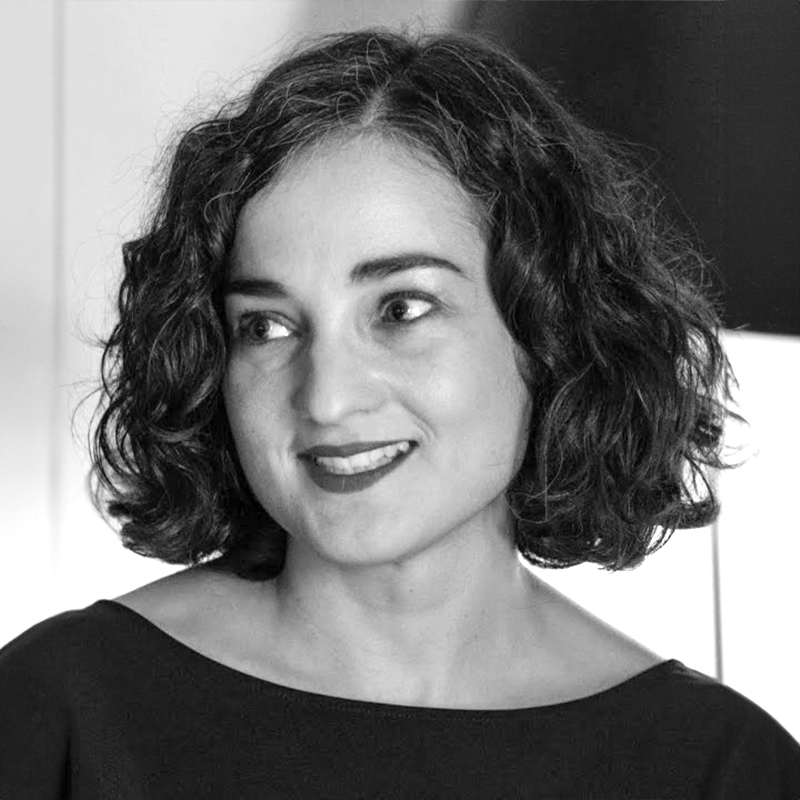
Valentina Manchia teaches semiotics for design and visual communication at Politecnico di Milano, Università di Bologna, ISIA Urbino and ISIA Faenza. She is interested in the evolution of the contemporary visual landscape. She is the author of Il discorso dei dati. Note semiotiche sulla visualizzazione delle informazioni (FrancoAngeli) and her articles have appeared in Doppiozero, Progetto grafico, Alfabeta2, Pagina99 and La Lettura.
To the sources: tools for designing and studying graphic design
The meeting develops into three connected moments intended to share, especially with young professionals and students, a research and project methodology that has graphic documents and documentary sources as its starting points.
The meeting takes place and starts from the collections of the Civica Raccolta di Stampe A. Bertarelli to then present recent publications, research, and exhibitions that address the issue of sources through different methods and perspectives: the series “Antologia di cultura grafica” by Lazy Dog Press, the project The Sources of Jan Tschichold’s “the New Typography” by ECAL, and IDA Investigating Digital Archives, a project by ISIA Urbino on documentary sources for visual communication available on the Web.
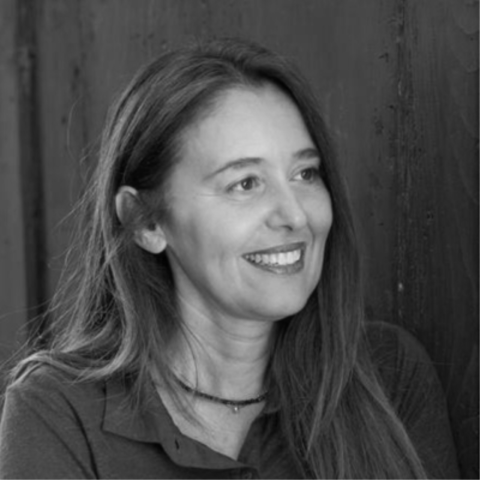
Emanuela Mancino teaches Philosophy of Education and Pedagogy of Communication at the University of Milano-Bicocca. She conceived the Laboratory of Philosophy and Pedagogy of Cinema and the research group Trame Educative, which she directs, together with Scuola di Autobiografia at Casa della Cultura in Milano. She is among the teachers of the Graphein - Società di Pedagogia e Didattica della scrittura course. She is part of the Cultural Committee of Casa della Cultura in Milan. She created and directs the Scuola di Sguardo, Bellezza e Scrittura at the Convento dei Cappuccini in Monterosso. She is a member of the Ethics Committee of the Veronesi Foundation. Author of numerous articles and essays, among the latest: Lì, dove ci incontriamo. Appunti per una pedagogia dell'imprevisto (2020); Guardare (Cittadella, 2020); Il filo nascosto. Gli abiti come parole del nostro discorso col mondo (Angeli, 2021). I passi delle donne (2021, Progetti per Comunicare); Educazione e neoliberismi. Pratiche per una comune umanità (Metis, 2022, with M. Rizzo); Capi delicati (2024, Progetti per comunicare).
Presentation of the book "Il Filo Nascosto. Gli abiti come parole del nostro discorso col mondo" by Emanuela Mancino
There is a profound relationship between dress, body, and memory.
This connection is intertwined with the gesture of inhabiting the space, leaving marks, writing and communicating, saying and disappearing, and keeping silent.
Dress is a transversal, tellable trace to which to leave the word and to which offer poetic words. The text, running along the hidden thread of everyday poetics, reconnects the deep linguistic signs of things to a sensitive and shareable phenomenology of dress as a practice of inhabiting and dressing with the intimate value of being in the world.
The hidden thread that binds us to the earth, to our ties, allows us to explain and confirm a practice of reflection aimed at taking place within the concept and the forms of the weft, which becomes an experience of learning, aesthetic expression, but above all a possibility of vision and re-signification. The hidden thread among the clothes leads us through plots of thought and experience of a pedagogical territory possessing a vocation to the hem, the possibility of giving a voice, a home, and a body to an invisible yet sensitive (and educable) "sense of making sense".
Seemingly mute, the fabrics of our dressing and undressing, the clothes and habits of our thoughts and emotions reveal, to a poetic and narrative listening, the boundless memorial, design, and relational value of materiality and pedagogical immateriality.
The book speaks to those interested in giving sensitive words to the visible and the invisible pedagogical. It allows those who want to listen to the voice of things to experience, through threads, wefts, and knots, all the material consistency of making, the craftsmanship of a pedagogical-reflexive operativity that gives substance to a philosophy of education as a thoughtful life practice.
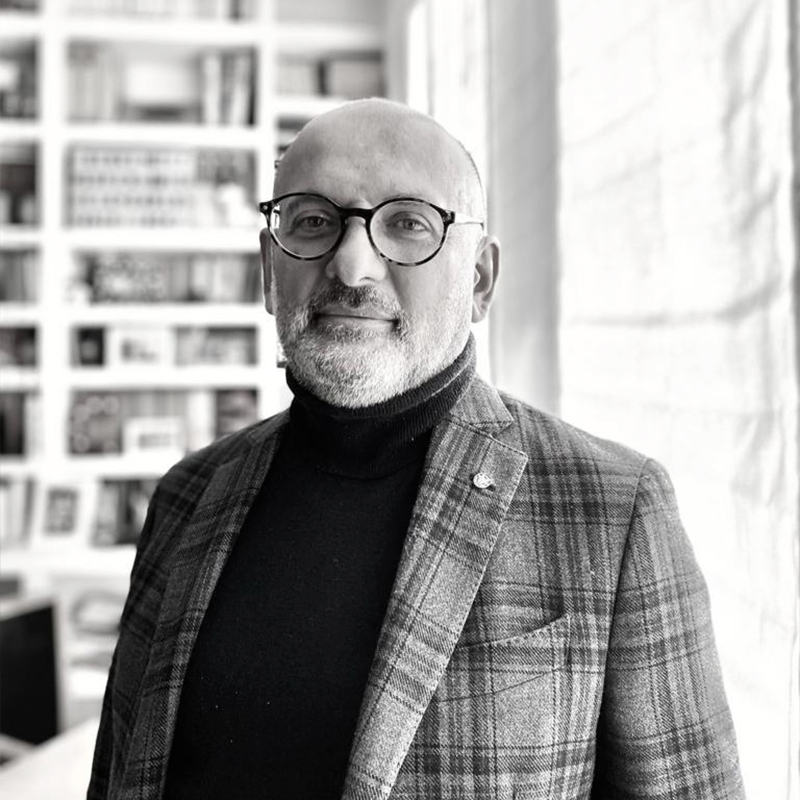
Architect and designer, Phd in Design. Regular Professor of Industrial Design at La Sapienza Università di Roma. Member of AIAP and ADI, Member of the Consiglio Italiano del Design of MIBAC and of the Disegno+ commission of MISE. President of the Master's Degree Course in Design Visual and Multimedia Communication 2007/2023. He has curated design and graphics exhibitions. He has been editor-in-chief of DIID magazine, director of Design for Made in Italy, editor and member of editorial boards of several national and international scientific design magazines.
Communication Design: a discussion about research
Valeria Bucchetti, Cinzia Ferrara, Carlo Martino, and Paolo Tamborrini, representatives of the research team “Design della comunicazione” of SID (Società Italiana di Design), dialogue with young researchers on the forms of experimentation that the university promotes to support the discipline's evolution.
Gruppo Banca Investis participates in BIG by continuing its path in design and supporting creativity. It will announce a contest dedicated to young designers. The initiative aims to discover and enhance emerging design talents, offering them a unique opportunity to express their innovative vision and providing unique and highly visible spaces.

Sergio Virginio Menichelli is a graphic designer from Milan. He studied graphic design at ISA in Monza, ISIA in Urbino and Atelir AG Fronzoni and photography at the Scuola Umanitaria Riccardo Bauer in Milan. He worked in various design studios from 1990 to 1996, including: Sottsass Associati Milan, Memo New York, Studio De Lucchi Milan. Together with Barbara Forni and Cristiano Bottino, he founded in 1996 Studio FM Milano, where he works for many Italian and international clients. For more than twenty years, Sergio Menichelli has been very dedicated to teaching, working in many schools and universities: from 2001 to 2006 and from 2018 to 2020 at the Politecnico di Milano; from 2007 to 2010 at the ISIA di Urbino; since 2007 at the Università di Design in San Marino; since 2020 at the IUAV di Venezia; since 2023 at the ISIA di Roma.
D/STANZE - Forms, relations, approximations
The exhibition aims to investigate the theme of distance: a fluid and dynamic concept that takes shape in multiple forms, relationships, and approximations.
Empathy, social relationships, hyper-connection, and microscopic or macroscopic views are just some of the declinations that Unirsm Design visual communication teachers and students have been working on, questioning the nature of interpersonal and interspecies relationships.
In a dialogue between the visual artifact and the viewer, there opens a universe of reflections and questions about contemporary society and its ability to truly connect beyond the distances that separate us.
The exhibition will also be complemented by a contribution by Alessandro Bergonzoni, the extraordinary actor and artist, entitled: Per stare e non distare (vite da vicino di cose).

Migliore+Servetto, founded in 1997 by Ico Migliore and Mara Servetto, is an Italian design studio based in Milan that has carried out 800 projects in 21 countries, winning prestigious international awards, including three Compasso d'Oro and thirteen Red Dot Design Awards. The firm moves between architecture, graphics and design with a particular focus on the value of the identity of places, always conceived as narrative spaces, developing in parallel a constant research activity in the use of light and new technologies. In fact, Ico Migliore is Professor at the Politecnico di Milano, Chair Professor at Dongseo University in Busan (South Korea) and member of the Scientific Committee of the Franco Albini Foundation; while Mara Servetto has been Visiting Professor at Joshibi University in Tokyo since 2009. Among the companies and institutions that have entrusted the firm are entities such as Max Mara, Tod's, Giorgio Armani, Adidas, Lexus, Samsung, Whirlpool, Bombardier, New York Times, and Wallpaper*. Migliore+Servetto has designed projects for some of the most important cultural destinations in Italy and Europe, such as the Museum of Natural History in Milan, the Egyptian Museum in Turin, the Miramare Museum in Trieste, the Chopin Museum in Warsaw, and the ADI Design Museum in Milan. On the subject of urban design, M+S signed the project d el Blue Line Park in Busan, South Korea, also curates the art direction and coordination of public interventions in the areas of the common ground of MIND, Milano Innovation District, where it also realized the wayfinding. On the occasion of the XXII Triennale, Broken Nature, he designed the Italian Pavilion, 4 Elements /Taking Care, for which Ico Migliore was also co-curator and art director. In 2022, the firm designed the interiors of the new headquarters of The Human Safety Net, the Generali Group's social foundation, inside the Procuratie Vecchie in St. Mark's Square in Venice.
Museum Seed. The Futurability of Cultural Places is the title of the new book by Ico Migliore and Mara Servetto (Migliore+Servetto)-published by Electa with the support of the Institute of Italian Culture in Seoul-that offers a vision of the future of architecture and interior design for cultural spaces. Like a seed, the museum grows, transforms and expands into its own "augmented" version, constantly evolving, moving between preservation and narrative and opening up to unprecedented forms of accessibility and inclusion. Inhabiting the spaces of culture today requires a new projectuality capable of integrating architecture project, design and graphics in the encounter with the evolution of technologies, neuroscience and artificial intelligence. Drawing on the long research and practice that the Studio has developed over its years of activity, this volume aims to broaden the inquiry by calling together multiple voices from the world of culture: directors, curators, collectors, academics, architects, designers, journalists, and psychologists discuss the theme of the future of spaces for culture.
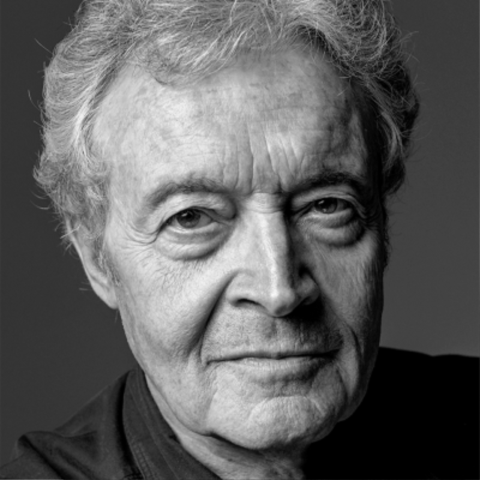
Armando Milani, one of the most important international figures in Italian graphic design, a member of the Alliance Graphique Internationale, of which he was president for three years, works between Milan and New York and has collaborated with Antonio Boggeri, Giulio Confalonieri, and Massimo Vignelli. The United Nations released one of his posters in 2004 and the Human Design Collection series of works. He has taught Graphic Design at Cooper Union, Art Director Club in New York, Peking University, University of Kansas, Parsons School in Santo Domingo, Mexico University in Acapulco, University for Foreigners in Perugia, European Institute of Design, Milan Polytechnic, and Raffles Milano.
Armando Milani is constantly engaged in encouraging public interest in global social problems, such as war, pollution, and deforestation, through posters with a significant impact collected under the name Eco-Humanity.
Eco-Humanity is a work without a specific client that confronts—sooner than others—social, environmental, and public criticism themes through a unique sensibility expressed with simple but powerful images and graphic messages. The focus is on humanity's future from the point of view of the macro challenges it will face.
On Thursday 23rd the exhibitions in Milano Certosa District will be open from 13.30 to 18.00
Presentation of the book "Incontri" by Armando Milani for Lazy Dog Press.
The biography of Armando Milani, the world-famous designer, is outlined through anecdotes and images of a hundred fortuitous and unexpected yet wanted and desired encounters that most influenced his work and inspired his creative choices. On the side of each encounter’s story, we find a picture or an artwork related to the character that is in perfect harmony with the expressive style of Milani: to communicate an immediate message, enchanting the eye to reach the heart. Vico Magistretti’s clothespin, Jack Nicholson’s cherries, Paul McCartney’s Happy New Year on the beach, Pelè’s goals, Muhammad Ali’s handshake, Alberto Sordi’s markets, Umberto Eco’s drunken sailors. Milani dancing with Mariangela Melato, and his wife waltzing with Saul Steinberg.
There emerges a mosaic scattered with stories that allow us to reach the deep end of Armando Milani’s biography and his message to us, identified by the founding features of his expressive research: at the base of these encounters, one can find ethics, friendship, the desire and necessity to communicate. It is one of the reasons why his graphic sign is so special. It reaches the essence of things, becoming everlasting and timeless.
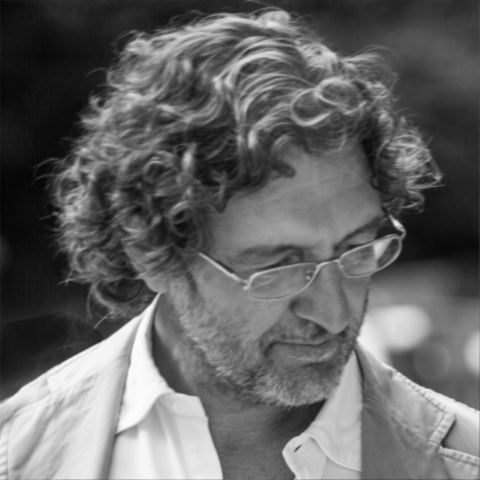
Maurizio was born in Milan where he attended Albe Steiner's courses at the Umanitaria. He takes his first steps with Giulio Cittato and Armando Milani. His projects are mainly oriented on logos, corporate images, wayfinding programs and cultural posters. Intense was the teaching career between private schools and universities. In 2005 he received an honorary degree in Communication Science from ISFOA University.
All designers have some life-long sorrows. Projects that have been commissioned, created, and cared for with professionalism but never realized and thus perceived as 'incomplete'. I am talking about visual projects in which creativity and complexity highlight the concept of 'design' - in the English sense of the term. Typically, these incompletes result from imprecise briefings or cultural divergences with our interlocutors; sometimes, design undergoes several bureaucratic passages within the companies, whereby the different opinions erode the initial project, depreciating it and making it feel less 'ours'. Other times, these projects remain incomplete for external reasons. A significant example of deep 'sorrow' is the brand Bob Noorda created for the Milan Subway: an 'incomplete' for the author, the world of graphic design, and the city of Milan.
On Thursday 23rd the exhibitions in Milano Certosa District will be open from 13.30 to 18.00
Unrealised projects. The unfinished world of Graphic Design
The relationship between designer, project and client. An opportunity to reflect on the inevitable discrepancies between concept and realisation, and the need to recognise and deal with disappointment as an integral part of the design process.
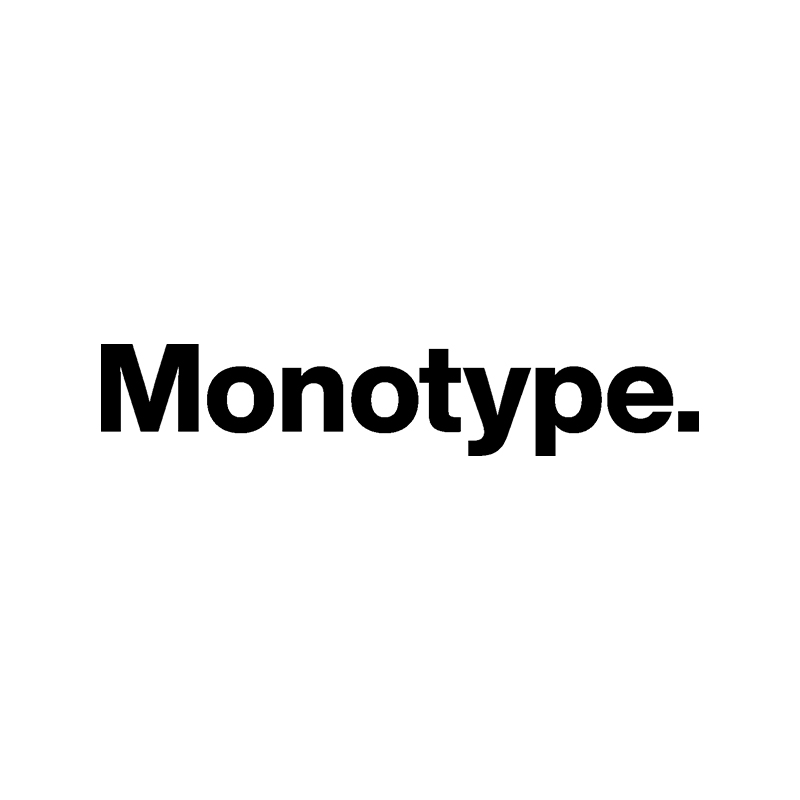
Monotype’s fonts and technologies are designed to enable creative expression. We have a library of over 150,000 fonts from the world’s most celebrated and gifted type designers and foundries. Our library includes some of the most famous and widely-used fonts, such as the Helvetica®, Univers® and Frutiger® typeface families, as well as new innovative fonts like Posterama and Masqualero. In the hands of designers our typefaces flourish, becoming a vehicle for innovative, ideas, and poetic forms of expression.
Monotype’s fonts and technologies are designed to enable creative expression.They have a library of over 150,000 fonts from the world’s most celebrated and gifted type designers and foundries. Their library includes some of the most famous and widely-used fonts, such as the Helvetica®, Univers® and Frutiger® typeface families, as well as new innovative fonts like Posterama and Masqualero. In the hands of designers their typefaces flourish, becoming a vehicle for innovative, ideas, and poetic forms of expression. Monotype will also be hosting conversations as an exhibitor on the value of typography and sharing design giveaways with attendees over the course of the event. Please visit their table for more information.
On Thursday 23rd the exhibitions in Milano Certosa District will be open from 13.30 to 18.00
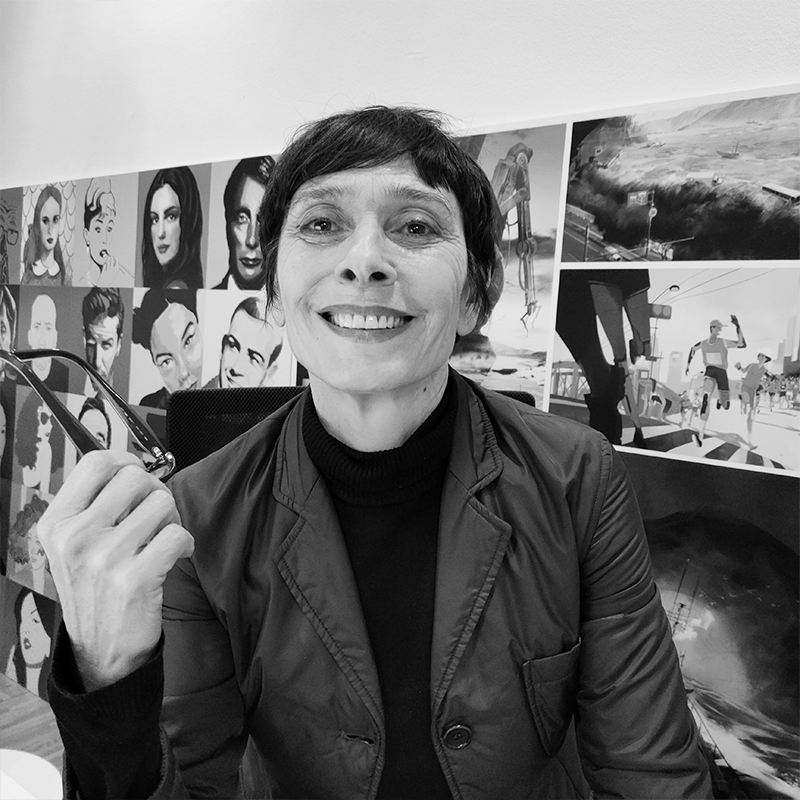
Sociologist of cultural processes at Università Statale di Milano, she obtains a PhD in Philosophy of Knowledge at Planetary Collegium, Plymouth University (UK). She has been collaborating since 1999 with international research institutes (Università Statale di Milano, Eurisko, Doxa, RQ Qualitative Research, Synergia), magazines and communication agencies. She directs the Communication and Graphic Design Area of NABA, Nuova Accademia di Belle Arti, where she teaches Sociology of Cultural Processes and Future Scenarios since 2004 (the course won the Education Excellence Award 2023). He recently designed the Master in Sustainable Innovation Communication, also collaborating with the City of Milan, Verde-Ambiente department. She participates in several interdisciplinary and inter-university platforms in collaboration with associations and educational institutions (Libera, Università Statale, Università Bocconi, Università Cattolica, Politecnico di Milano). Recent publications include University must be saved!, Digital Automation in Educational Field and Una cosa come questa potrebbe andare bene?
Fragile Signals
One of the main reasons for the lack of accessibility in the current directional signage systems is the use of a mainstream model based on average users, the lack of communication in the design of public spaces and “non-places”. Starting from the cultural genesis of social exclusion practices, this talk addresses the need to change the standard for designing inclusive directional signage/wayfinding systems. Curated by the Communication and Graphic Design Area of NABA, Nuova Accademia di Belle Arti.
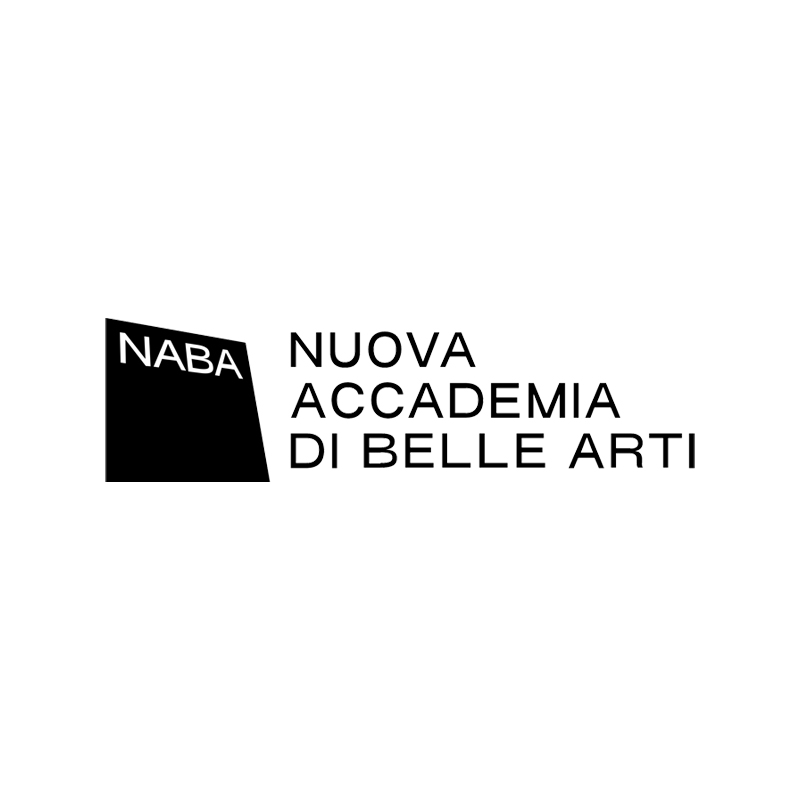
Wayfinding and public spaces
The exhibition displays the tables of directional signage/wayfinding designed by the students of the three-year course in Graphic Design and Art Direction of NABA, Nuova Accademia di Belle Arti, guided by Professor Luca Ferreccio for the classes of Brand Design and Future Scenarios, with Patrizia Moschella, Communication and Graphic Design Area Leader. Despite the attention to inclusivity policies, there are still evident planning gaps addressed in the classes, which aim to create new best practices in communication and accessibility.
On Thursday 23rd the exhibitions in Milano Certosa District will be open from 13.30 to 18.00
School of Non-Knowledge Exhibition
Bringing together projects from thirty different universities, design schools and design groups from all over the world, the Scuola del Non Sapere exhibition at BIG, Biennale Internazionale Grafica, is a small extract from this enormous confrontation with all the things we don't know, what we don't want to know, and what we have voluntarily or involuntarily forgotten. At a time when the world's leaders continue to assert that they don't know, it's up to designers to make these uncertainties intelligible, as well as to reveal these pretenses, to represent them, to make them explicit, and to consider them as a necessary basis for any truly democratic debate, as well as for any creation. The exposition presents several of this pedagogical panels done by the students of Communication and Graphic Design Area of NABA, Nuova Accademia di Belle Arti.
https://civic-city.org/nonsapere/
Curated by the Communication and Graphic Design Area of NABA, Nuova Accademia di Belle Arti and by Ruedi & Vera Baur and Susanna Cerri, Civic-City.
Fragile Signals
One of the main reasons for the lack of accessibility in the current directional signage systems is the use of a mainstream model based on average users, the lack of communication in the design of public spaces and “non-places”. Starting from the cultural genesis of social exclusion practices, this talk addresses the need to change the standard for designing inclusive directional signage/wayfinding systems. Curated by the Communication and Graphic Design Area of NABA, Nuova Accademia di Belle Arti.
15 years of great brands at NABA
The exhibition presents a selection of panels representative of the projects carried out over the past 15 years in the Creative Lab by the students of the BA in Graphic Design and Art Direction at NABA, Nuova Accademia di Belle Arti in collaboration with nationally and internationally renowned companies, associations and businesses, such as Centri Porsche in Milan, San Benedetto, Venchi, Rolling Stone, and many others. The Creative Lab was established with the precise scope of bridging the academic and professional worlds by offering real-world briefs to third-year students of the BA.
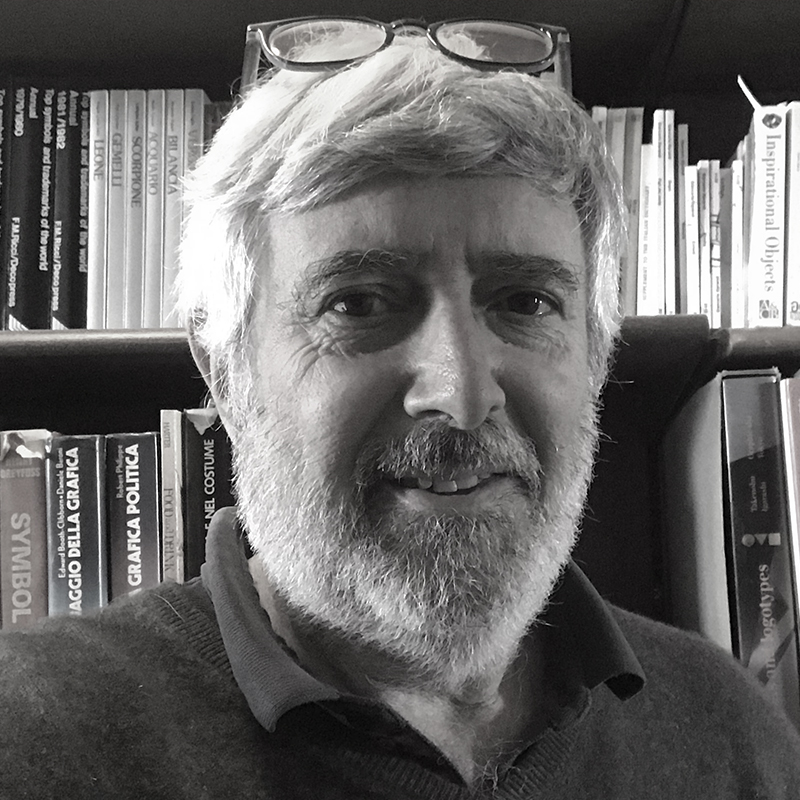
Luca Negri, Milan, 1956. Graphic designer, brand identity expert, creator of signs, texts and visual codes, he has always been interested in the relationship between the complexity of the global image and the detail of individual components. After the classical studies he interrupted the faculty of architecture to carry on the graphic design studio of his father Ilio, who died prematurely. In 1983 he founded, with Marta Amati, the Luca Negri & Associati studio, which he still owns today. Art director of Negri Firman PR & Communication and professor of Brand Identity at the IED in Milan.
Ilio Negri. No to civilisation if this is civilisation
The exhibition is dedicated to Ilio Negri's contribution to social graphic design. The complete series of 13 posters addressing the themes of progressive environmental decline, from pollution to overpopulation and destruction of animal species, exhibited for the first time at the Biennale di Rimini in 1970, will be displayed again. These themes, still extraordinarily relevant today, will be presented after over fifty years as an homage to one of the prominent masters of graphic design who prematurely passed away in 1974.
On Thursday 23rd the exhibitions in Milano Certosa District will be open from 13.30 to 18.00